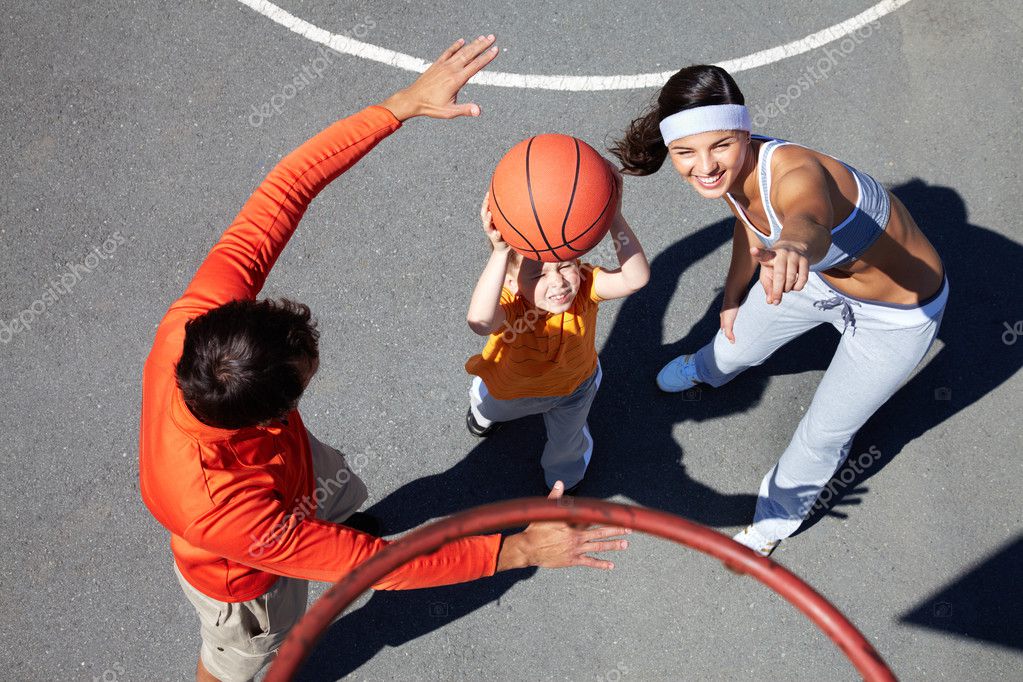Home »
Misc »
Teaching kids how to play basketball
Teaching kids how to play basketball
The 7 Best Drills to Teach Kids How to Play Basketball – Old Man Game Tips
Looking for some drills to teach basketball? Here are the 7 best drills to teach kids how to play basketball and more importantly, the fundamentals of the game.
Over the past few months, my nephew has been asking me to take him to play basketball.
I was putting it off because, honestly, I was lazy. But recently, I decided to take him.
AdvertisementsThe day prior, I asked him if he wanted me to just take him to the gym or if he wanted me to teach him how to play.
He said “both.”
“Okay, we can do that,” I responded
Advertisements
But now, I’m hit with a problem. How can I teach him?
Do I just play one-on-one games with him? Do I let him shoot around for a couple of hours?
What can he do to learn the fundamentals of basketball?
AdvertisementsI considered making him do the drills that I did when I was on my middle school’s basketball team.![]()
But I didn’t want to be one those hardcore “coach” parents.
The first reason why was that he’s not my kid, so that would just be weird. The second reason was that I didn’t want to be like those people.
However, those drills were really helpful to me. They taught me the fundamentals and without them, I’d probably still only be able to drive down the right lane.
I pondered it and elected to run those games and drills with him. But I changed it up a bit to make them more fun.
The first time day went well. Really well, actually.
He was up to the challenge and did everything I told him to do. I thought I was going too hard on him at first.
But after, as we were driving home, I asked him if it was okay and he said yes.
Advertisements
The next few times we went, I would incrementally make the workouts more difficult.
I made him work a little harder each time. I also increased the intensity each time we played a game. And he was fine with it.
And he was fine with it.
We haven’t played that many times, so he hasn’t shown much improvement yet. However, I have noticed that he is more strategic when we play one-on-one.
The 7 Basketball Drills for Improving FundamentalsSo here are 7 games and drills that I used to teach him the fundamentals:
Advertisements
The Basic Lane Dribble Warm-UpThis is the standard warm-up drill that everyone teaches.
All you do is dribble with your dominant hand from one end of the gym to the other. On your return, you dribble with the opposite hand. Do this twice.
Additionally, I like to add in one set of crossovers.
Advertisements
When doing this, make sure your kid’s body is low and that their dribbling is controlled.
Remind them to lower it if you notice them standing upright.
Lane JogsLane jogs are great because they warm you up as well as develop footwork.
First, start with jogging normally up the lane. Then on your return, jog backwards.
Once you reach your starting point, jog laterally (lateral slides) up and back. Then, you’re going to do crossover jogs up and down the court.
The video above shows a crossover run.
The mechanics of what you want your kid to do is the same, but instead of running, have them jog.
AdvertisementsIf your kid doesn’t have the stamina to do the entire gym yet, jogging up to the half-court line is fine too.
And like before, make sure they are low to the ground. They’ll have more control over their body if they do so.
Do this drill once.
Around-the-WorldPlaying Around-the-World is great for improving shot mechanics. It’s also a great game because your kid can do it solo.
It’s also a great game because your kid can do it solo.
While he is working on his shot, you can go off and do whatever you like.
You can shoot around or lie down on the bench and take a nap because you really didn’t want to take your nephew to play basketball that early in the morning.
But you had to because you were forced to by his mom.
AdvertisementsBut I digress.
Jokes aside, when your kid is doing this drill, make sure that he is shooting the ball properly.
Make sure that his knees are bent, the hand placements are correct, and that he’s shooting with his wrist and not his arms (and in some cases, his entire body).
Have your child do this drill once (so the entire course).
Layup LinesThis is also a standard warmup.
Have your kid stand on the right corner of the free-throw line. From here, she will drive down the lane and do a layup.
Do this 10 times and switch over to the left corner.
On this lane, have your kid dribble down the lane with her left hand and lay it in with that hand too. For most kids, I think this will be difficult.Advertisements
So make her do it 12 times so that she can get comfortable with it.
If your kid is left-handed, switch this drill around.
Once she is comfortable with this drill, up the difficulty and have her do the Ladder Layup Drill. You can click here to learn what it is.
The Mikan DrillKids hate this drill because it’s tedious.
But this drill is actually really good for getting a feel for how to shoot the ball up close. You can click here to learn how to do it.
But for this drill, have your kid make 10 shots.
You can also change it up a bit and let your kid shoot close-range shots rather than making them lay it in.
2-on-1 (but really just 2 on none)Have you ever heard of this drill? This was one of my favourite drills to do when I was in middle school. Basically, the 2-on-1 is a fast break drill.
There will be two players on offense and one on defense.
The offence will start at one end of the court (or at half-court) and one of the players will have the ball.
On the other end will be the defender.
The offence will run down the court and try to score as quickly as possible. The defender has to prevent the shot from going in.
Ideally, the offence will make at least one pass during this transition, but it’s not necessary.Advertisements
However, since you’re probably doing this drill with one kid (like I did), you’ll be going 2-on-none.
Rather than just sprinting up and down the court making layups against air, I turned this drill into a passing one.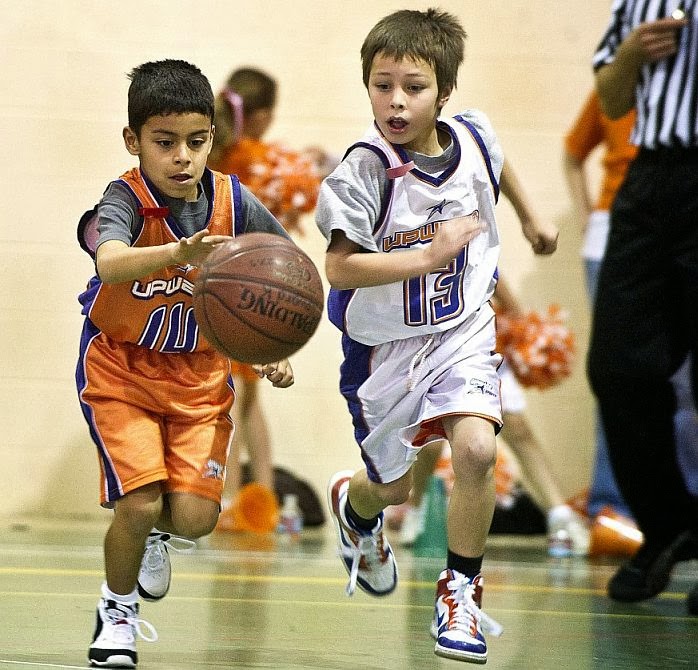
I would start by taking the ball up the court and then at around halfway, pass the ball.
My nephew catches it, waits, and when I’m near the three-point line, he would pass it back to me and I would go in for a layup.Advertisements
After 5 runs, we would switch positions. We’ll normally do this drill once.
This drill is great for figuring out when and where to pass the ball and how to catch it.
It’s also a good drill for practising the layup.
King of the CourtThe final game that we do before heading out for some healthy fried chicken or hamburgers is King of the Court (click here to learn how to play).
You can also just play a one-on-one game if you like. My nephew just prefers this one.
Playing a competitive game like this is good because it forces your kid to react as if he is in an actual game.
He’ll have to decide quickly what he’s going to do to score or to stop the basket. He’ll have to put everything he has learned into action.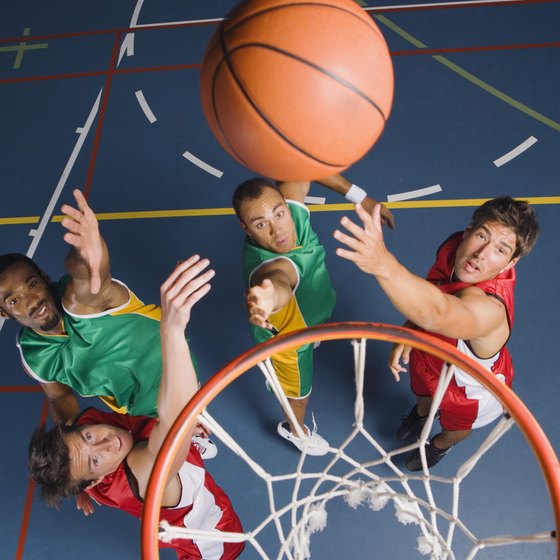
It’s also healthy competition.
However, if your kid is pretty new to basketball, take it easy on him.
Don’t let him score uncontested, but also don’t pull a Dikembe Mutombo and swat all of his shots. And when you’re on offence, don’t Jordan him.
Make him defend you, obviously, but don’t dominate him.
I normally just bust out my old man game and make my nephew defend that.
Final ThoughtsThese are 7 basketball drills that will teach the fundamentals of basketball.
It works on everything, from footwork to shooting to defense.
Are these games you would use to teach basketball? Share your thoughts in the comments below.
Additionally, If you’re an average Joe who wants to learn the fundamentals of basketball, these games and drills will work for you too.
***
P.S. If you (or someone you know) are struggling to get better at basketball, you may be doing something wrong. This is why you need to check out my Old Man Game Activity Guides and Planners.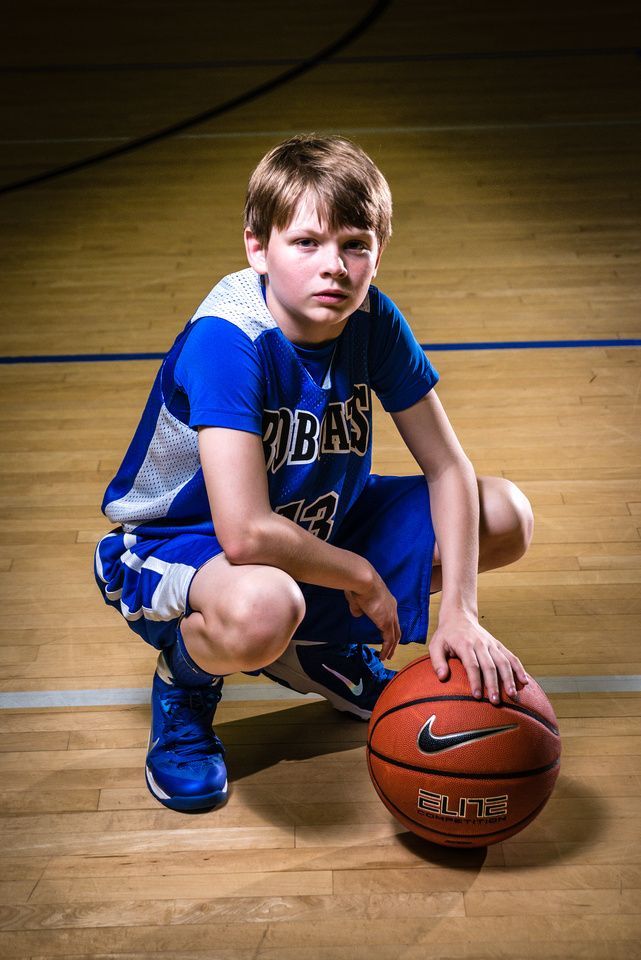 They’re convenient training systems that will help you work on your fundamentals and conditioning. Click here to learn more about them.
They’re convenient training systems that will help you work on your fundamentals and conditioning. Click here to learn more about them.
Coaching Youth Basketball - What Should You Teach?
By Joe Haefner
Home > Coaching > Coaching Youth Basketball > Coaching Youth Basketball - What Should You Teach?
Many youth basketball coaches don't know where to start or what to teach. Well, we hope to help you out in this area. Below, we provide some advice on what to teach youth basketball players. We break it down between 3 levels. As you perfect each level, you can advance to the next level to teach more skills & concepts.
All beginner players should start with Level 1 no matter the age. We put ages next to the level as a general guideline. Depending on the
age and skill level, you'll progress through the levels at different rates.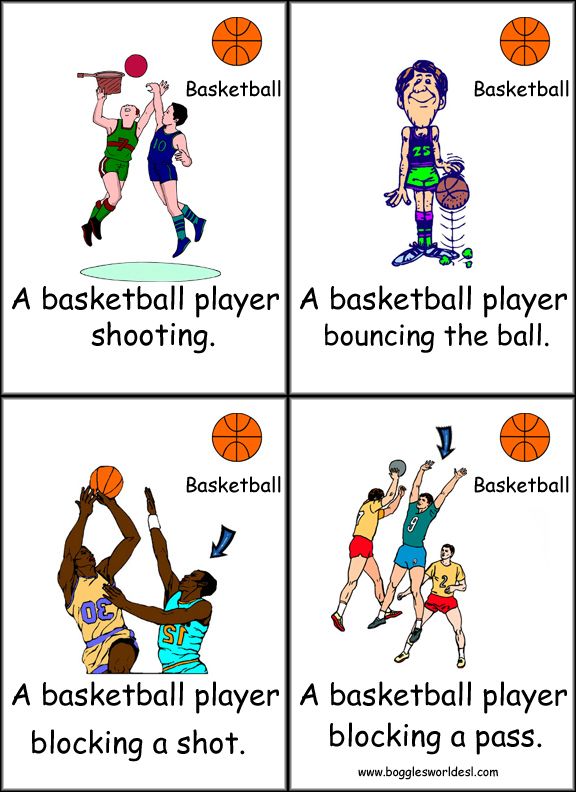 You may notice that you'll spend 4 years working on Level 1 with 7 to 10 year olds.
At the same time, you may be able to progress to Level 2 after two weeks working with a group of 13 year olds who are playing basketball for the first time.
You may notice that you'll spend 4 years working on Level 1 with 7 to 10 year olds.
At the same time, you may be able to progress to Level 2 after two weeks working with a group of 13 year olds who are playing basketball for the first time.
I would advise to go back and start at Level 1 every year. A lot of high school and college coaches start at Level 1 every year. They just progress through the levels more quickly than a youth team. It's a great way to ingrain
the fundamentals into your players year in and year out.
We advise to take a couple of hours and write up a master practice schedule
for the season, so you can progressively teach them the skills mentioned below. It may take a few years to teach all of these skills at one level and THAT'S OKAY! For youth players, we want to focus on the long-term development, not how many games they win when they're 11 years old.
If you try to progress them too quickly, it will hurt them in the long-run.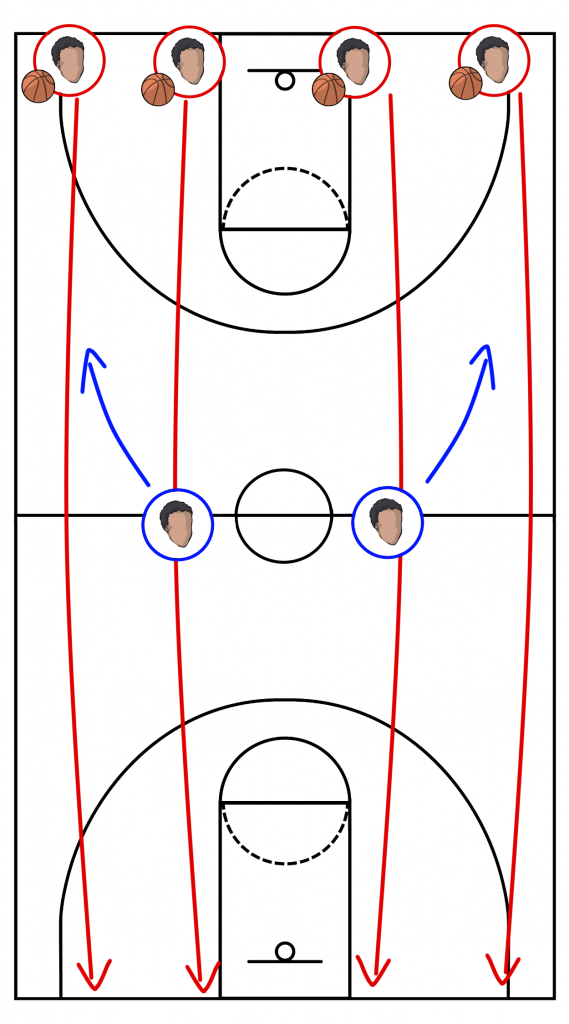 You want to have a solid foundation first. You shouldn't try to teach
them every dribble move in one year or every option in the motion offense. The same way in which you couldn't teach a person calculus if they did not
know how to do simple addition and subtraction.
You want to have a solid foundation first. You shouldn't try to teach
them every dribble move in one year or every option in the motion offense. The same way in which you couldn't teach a person calculus if they did not
know how to do simple addition and subtraction.
Important Note: Throughout this article, you'll find many links to other articles on the website to explain concepts that we advise to teach. My
recommendation would be to read the entire article first, then go back and click on the links to read the other articles.
You may also want to add this article to
your "Favorites" or "Bookmark" it, because there may not be enough time to read all of the links in one sitting.
Level 1 (7 to 10 Year Olds)
Here's what to teach, ordered by priority:
- Lay ups - You should practice lots of lay ups with both hands.
 Your goal should be to get all players to make lay ups with their left and right hands equally well!! Teach them to jump off the proper foot. They should jump off the left leg when shooting a right hand lay up. They should shoot off their right leg when shooting a left hand lay up. It will be difficult but work on it. You'll probably need to start really close to the basket, with no dribble, and take just one step to practice the footwork. Once you add the dribble, they should dribble with their left hand when shooting left hand lay ups. And vice versa.
Your goal should be to get all players to make lay ups with their left and right hands equally well!! Teach them to jump off the proper foot. They should jump off the left leg when shooting a right hand lay up. They should shoot off their right leg when shooting a left hand lay up. It will be difficult but work on it. You'll probably need to start really close to the basket, with no dribble, and take just one step to practice the footwork. Once you add the dribble, they should dribble with their left hand when shooting left hand lay ups. And vice versa. - Footwork - Teach them triple threat positioning, pivoting on their left and right foot without traveling, jump stops, and to square to the basket as soon as they catch the ball in a triple threat position. You should spend a lot of time on footwork!
- Shooting form - For this age group, we highly recommend using smaller balls and lower baskets. If that is not possible, allow the players to dip their elbows which will give them more strength.
 To learn more on shooting, we also have the Breakthrough Basketball Shooting Guide.
To learn more on shooting, we also have the Breakthrough Basketball Shooting Guide. - Ball handling - You should teach your players to dribble with left and right hands equally. Basic dribble moves such as the speed dribble, crossover, protect-the-ball dribble, and back-up dribble.
Resource: Progressive Youth Ball Handling & Footwork Workouts App - Players can do the workouts from anywhere. The coaching dashboard also allows you to monitor multiple players or your whole team.
- Athletic & movement skills - Teach them how to run, jump and land, skip, stop, move laterally, squat, lunge and any other basic movements. If you don't know how to teach these movements, ask a professional or PE teacher to show you how. 99% of the time they would be more than willing to help, and they may even come and show the kids themselves.
Should We Teach Basketball Skills To Players Under the Age of 10? - Useful information for all levels of coaches, not just coaches who work with players under the age of 10.
- Basic passes - Teach and practice the basic chest, bounce, and overhead passes.
- Play plenty of 2 on 2 and 3 on 3 games to teach concepts (no dribble keep away). It gets the players more experience and allows them enough space to operate and use the new skills they have learned. Make sure to use plenty of age-appropriate drills & games.
For more on this, read Could 3 on 3 Basketball Be the Best for Youth Players?
- Offense - Do NOT use any structured or patterned offenses. First, get them comfortable on the court. They will start to figure things out on their own. Your main concern should be to have them move & not stand still.
If you use a few basic cuts and maybe screens in your shooting drills at the beginning of practice, then your players will already know how to move in a motion offense. Then you don't have to waste time teaching offense. Just let them play.
Once players feel comfortable on the court, show them proper spacing.
As they progress, you can start to introduce them to motion offense situations.
- Basic cuts & how to get open - If time permits, you can introduce the basket cut and straight cut. I would suggest that you just work these cuts into your shooting drills at the beginning of practice. This will save loads of time.
- Defense - Teach the basic stance, defensive slide, and basic off-ball principles. Don't worry about spending as much time on defense. As they get older, you'll gradually spend more time on defense. Focusing on it 5 to 10 minutes per practice would be more than sufficient.
Basic Off Ball Principles:
- Stay between man and the ball
- Always stop the ball if it is in front of you!
For this age group, we are against zone defenses for development purposes.
For anyone coaching this age group, we HIGHLY recommend the DVD The Youth Coaching System (By Jim Huber). You'll gets lots of drills and learn exactly how to teach the most important fundamentals the to kids "right way". We truly believe this DVD should be required viewing for ALL youth coaches.
You'll gets lots of drills and learn exactly how to teach the most important fundamentals the to kids "right way". We truly believe this DVD should be required viewing for ALL youth coaches.
Level 2 (10 to 12 Year Olds)
You should expand onto more advanced skills for everything mentioned above. But remember, if your 10 to 12 year olds are inexperienced, you should start in Level 1. And at the beginning of each season, you should start at level 1 until those skills are perfected. Then you can progress into the more advanced stuff below.
- Lay ups - jumping off one foot and jump-stop lay ups.
- Teach more cuts: back cut, curl cut, etc.
- Continue to focus on shooting form and introduce some movement for shooting drills (shooting off the dribble and off the catch). To learn more on shooting, we also have the Breakthrough Basketball Shooting Guide.
- Ball handling & dribbling - teach more dribble moves such as the inside-out dribble (fake crossover), hesitation move, and between-the-legs.
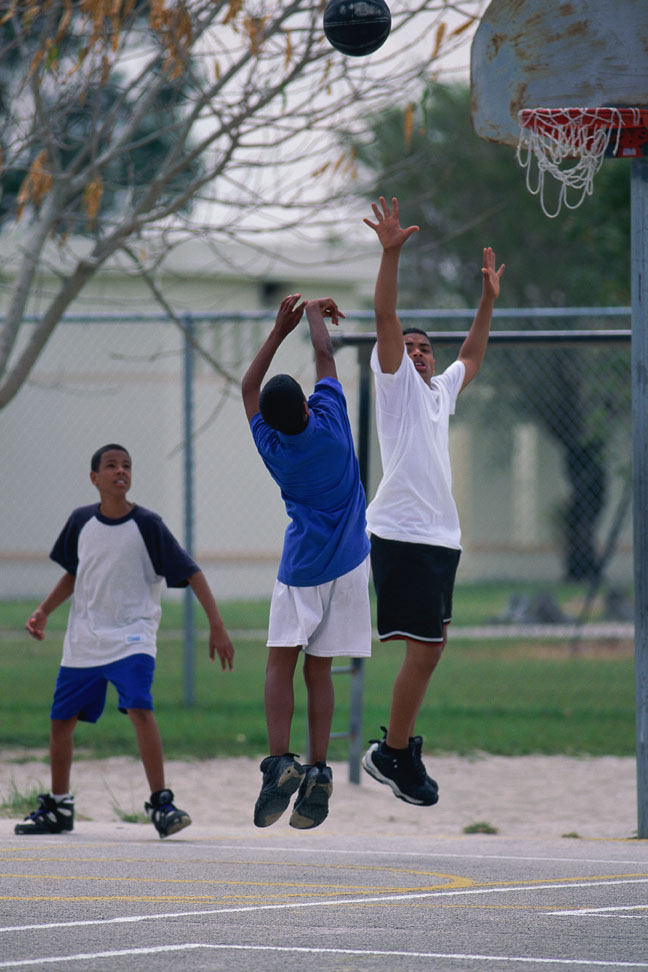
Resource: Progressive Youth Ball Handling & Footwork Workouts App - Players can do the workouts from anywhere. The coaching dashboard also allows you to monitor multiple players or your whole team.
- Passing - continue to teach basic passes and introduce some advanced passes (baseball pass and wrap around pass). Use other drill such as machine gun passing and pass and switch.
- Passing under pressure - you can use pair passing with a defensive player in the middle running back and forth to pressure the passer. You can use this drill to practice breaking pressure: full court press breaker drill.
- Teach basic screens.
- Footwork - introduce jab steps and ball fakes (pass fakes and shot fakes).
- Rebounding - introduce rebounding technique.
- Basic post moves. drop step and jump hook.
- Spacing - introduce more basic spacing concepts.
- Offense - keep playing 2 on 2 and 3 on 3 to teach concepts.
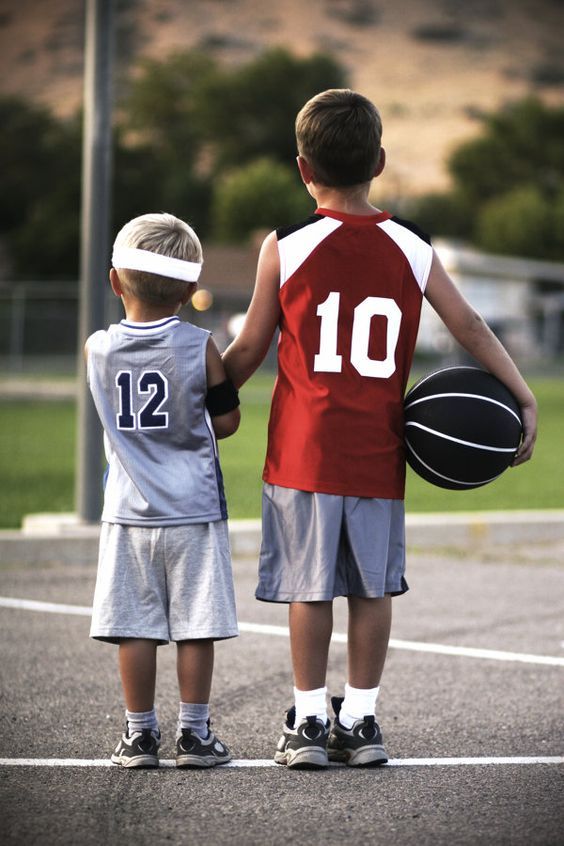 You can also start to introduce more motion offense situations and play some 5 on 5.
You can also start to introduce more motion offense situations and play some 5 on 5.
- Defense - keep emphasizing and spend a little more time on the defensive stance,
defensive slide, and off-ball principles mentioned in Level 1. If you feel that your players are ready, work on more
off-ball defense principles.
In our Man to Man Defense System, we provide step-by-step how to build and teach your defense.
For this age group, we are against zone defenses for development purposes.
For anyone coaching this age group, we HIGHLY recommend the DVD The Youth Coaching System (By Jim Huber). You'll gets lots of drills and learn exactly how to teach the most important fundamentals the to kids "right way". We truly believe this DVD should be required viewing for ALL youth coaches.
Level 3 (12 to 14 Year Olds)
You should expand onto more advanced skills for everything mentioned above.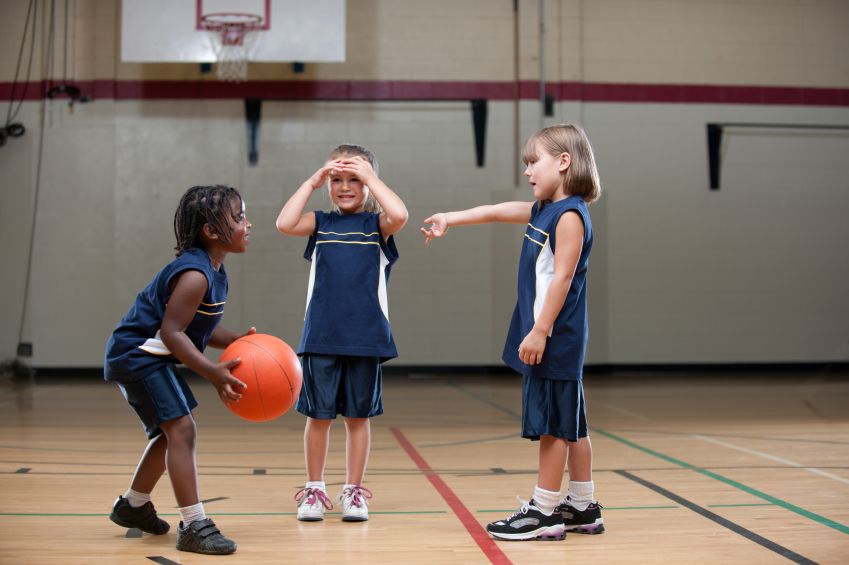
- Lay ups - practice contested lay ups. Also, you could start to teach players, same-leg same-shooting hand lay ups. I know that is against conventional wisdom, but think about it for a second.Your player just blew by a defender or is on a fast break. Do you want them stutter-stepping to give the defense time to recover and contest the shot? So if that means jumping on your right-leg and shooting right-handed on the same side, so be it.
- Continue to teach basic cuts and add more cuts.
- Continue to emphasize shooting form (move to big baskets and bigger balls).
Practice shooting on the move off of the pass and the dribble. To learn more on shooting, we also have the Breakthrough Basketball Shooting Guide.
- Ball Handling & Dribbling - teach more dribble moves such as the spin move, behind-the-back. Incorporate some double-moves (crossover followed with a behind-the-back).
Resource: Progressive Youth Ball Handling & Footwork Workouts App - Players can do the workouts from anywhere.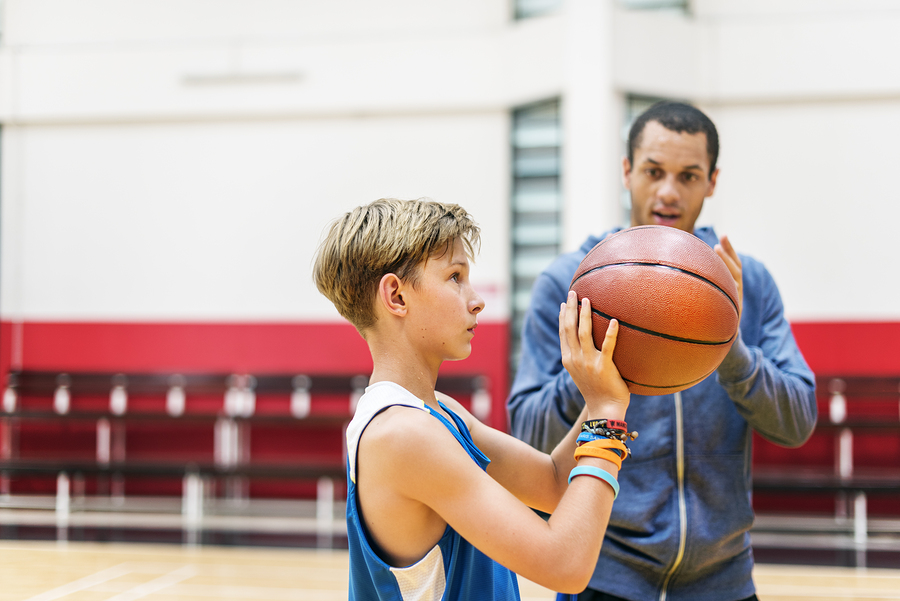 The coaching dashboard also allows you to monitor multiple players or your whole team.
The coaching dashboard also allows you to monitor multiple players or your whole team.
- Passing - introduce some other advanced passes (dribble pass, behind-the-back pass, pick and roll pass).
- Passing Under Pressure - You use Pair Passing with a defensive player in the middle running back and forth to pressure the passer. You can use this drill to practice breaking pressure: Full Court Press Breaker Drill.
- Teach Basic Screens.
- Footwork - continue to work on jab steps, pivots, and ball fakes (pass fakes and shot fakes).
- Rebounding - put more emphasis on rebounding technique and spend more time on rebounding drills.
- Post moves - keep practicing post moves mentioned above while introducing a few more when the players are ready drop step
counter and up-and-under move.
- Spacing - advance to higher levels of spacing drills.
- Offense - introduce more motion offense situations.
 You should start to notice that your players are becoming much better at reading the defense.
You should start to notice that your players are becoming much better at reading the defense.
- Defense - Emphasize basics from previous levels and move on to rotations and situations.
In our Man to
Man Defense System, we go into great detail about rotations and situations.
For this age group, we are against zone defenses for development purposes.
Sample Practice Plan for 7 to 10 year olds.
Sample Practice Plan for 11 to 14 year olds.
Do you have any questions or suggestions? Let us know by leaving your comments...
Basketball training in elementary grades.
Prepared by the teacher of physical culture Rylkov G.V.
Since the 2002-2003 academic year, along with the current comprehensive program, several alternative physical education programs have been introduced for students of general education schools. And so, working on a complex program, I decided to use one of these alternative programs,
which is based on one of the most massive and popular sports among schoolchildren - basketball, but can only be used in elementary school starting from the 2nd grade, since the comprehensive curriculum for teaching this sport does not provide for elementary school, although passing the section "Outdoor games" schoolchildren master some skills in possession of the ball. A certain role in my decision was also played by the fact that our elementary school works according to experiment 1-4, and therefore I, as I work and in grades 2-3, have to look for and solve something different, new.
A certain role in my decision was also played by the fact that our elementary school works according to experiment 1-4, and therefore I, as I work and in grades 2-3, have to look for and solve something different, new.
Their program material of the alternative program, I used in my work two educational sections "basic knowledge" and "Special training", and included them in the section "Outdoor games" for grades 2-3. And now in my work in this direction began to include three stages in teaching this sport:
Stage 1 - 2-3 classes
Stage 2 - 5-8 grades
Stage 3 - 9-11 grades
Why this sport and not another I chose in my work. Firstly, basketball has become a traditional sport at school for a number of years. Secondly, I myself used to be engaged in game types and basketball is more familiar to me.
And thirdly, the technical and tactical actions inherent in basketball are fraught with great opportunities for the formation of vital motor skills and the development of children's physical abilities.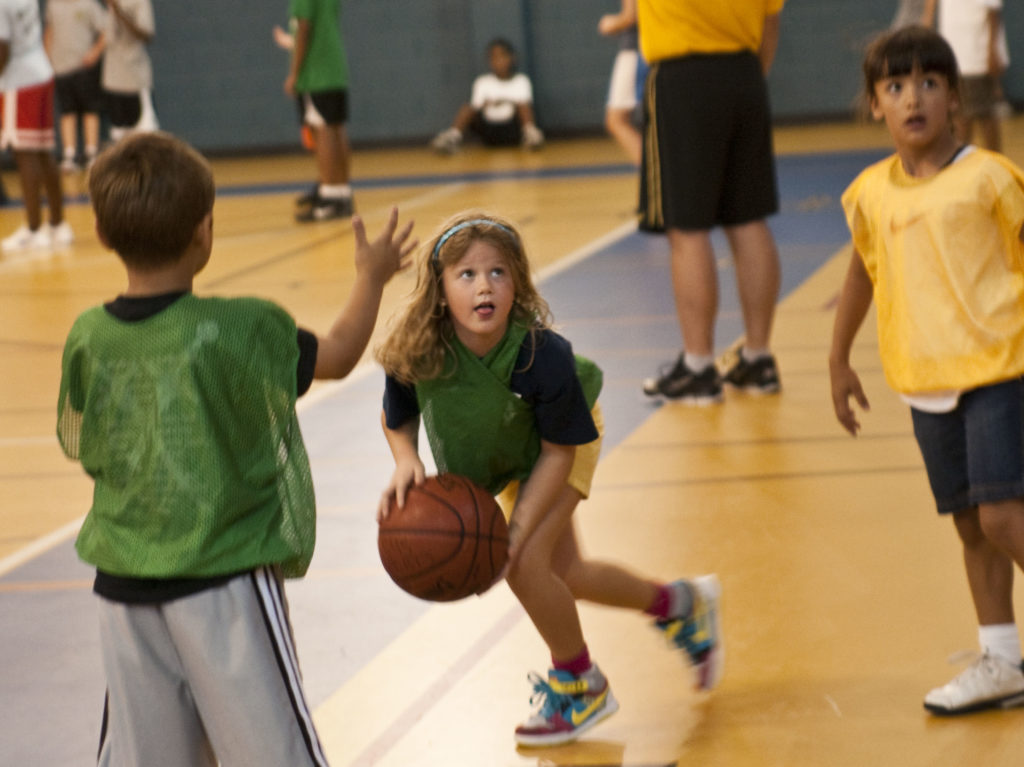
But I will dwell in more detail on teaching basketball in elementary grades.
Starting from the 2nd grade, students master throws, catching, passing small rubber balls to a partner, stopping in motion on a sound signal and various exercises that develop motor skills. We study all these elements in different ways, but the most acceptable one is through games, for example, “Ball to a Neighbor”, “Passing the Ball in Columns”, “Ball to a Neighbor”, etc. Also in the lessons I use small sports equipment, mostly for personal use, these are small rubber balls , cubes, weighted bags.
Performed exercises with these objects in walking and running, on the spot, in the lid, throws and catching in pairs, students develop the skills that they need later when handling a basketball.
Starting to study some techniques, I introduce the guys to the markings of the basketball court and give them various tasks “Walking along the indicated lines”. To do this, I prepare for them the pace of movement "Hourglass", "Reel", "Snake", etc.
In the class II program, I included the player’s stance, the player’s movement in the stance, stop on a sound signal and various sets of exercises with small and large balls. For the harmonious development of the body and coordination of movements, we perform exercises with both the right and left hands, perform jumps on both the right and left legs, and then we complicate the exercises.
I start training from the player’s stance, explain why a stance is needed in the game and show what position should be in the stance: legs half-bent, arms in front of the chest, and I give exercises for training.
1. Line up. Crouching to jump out and land on half-bent legs, legs shoulder-width apart, one set forward.
2. Sit down in a line, jump out and land in a standing position. Immediately after landing on bent legs, run to the opposite sideline. Use the rack in outdoor games "Sparrows and Crows", "Day and Night", etc.
Movement. There are many varieties of movements, but first we learn running facing forward in a straight line, then we master running with a change in direction and speed. After that, we learn running sideways, backwards and their varieties. The basic element is the position on half-bent legs and balance, which is ensured by the half-bent legs of the arms in front of the chest.
After that, we learn running sideways, backwards and their varieties. The basic element is the position on half-bent legs and balance, which is ensured by the half-bent legs of the arms in front of the chest.
Training exercises:
1. Running around the hall on half-bent legs with a sliding touch of one, then with both hands of the floor along the whistle.
2. Oncoming relay races with touching lines and objects on the floor.
3. Running circles with hand touching the line of the circle. Relay races with running circles.
When conducting games and exercises of a technical nature, I use lighter balls, and heavier balls in general educational exercises.
While walking at an average pace, and then when running, we execute the “Stop” command after which the students stop in a wide step position. With the help of various general developmental exercises with small and large balls, we study movements with balls. The same exercises are for the children a means of developing motor qualities.
To master the techniques of the game I use lead-up exercises:
1. Large ball in both hands at chest level. Throwing the ball up and catching it, you can clap your hands behind your back.
2. The same as exercise 1 but with catching after the ball bounces off the floor at different heights6 at the level of the knee, waist, head.
3. Ball on the floor in front of the student. Bend over and put your hands on the ball. Repeat several times.
4. Same as exercise 3, but put your hands on the ball, grab it with your fingers and press it to your chest, straighten up, bend over again, put the ball on the floor, straighten up.
5. Exercises in pairs with the ball.
6. Throw the ball over your head, straighten your arms and catch the ball, pulling your arms to your chest.
In the third grade, students learn to stand, stop by jumping, catch and pass the ball with both hands from the chest from a place, with a reflection from the floor and backboard.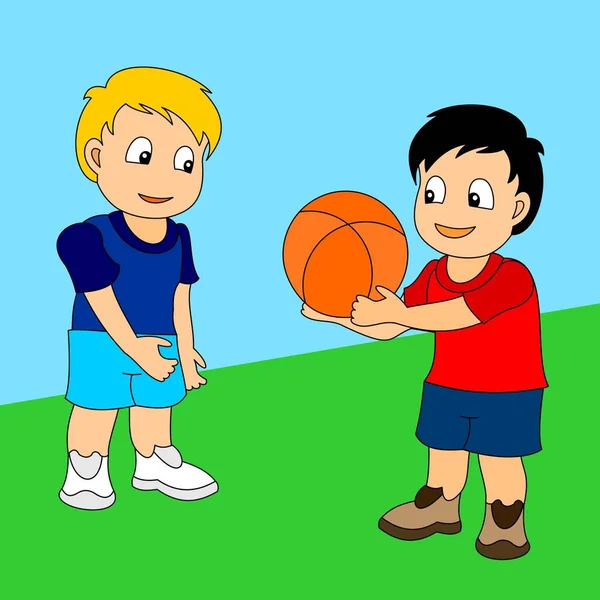
The main task of teaching basketball in grade III is to study the basics of the game technique and consolidate the acquired skills in outdoor games and special exercises. In the course of basketball lessons, I use various types of walking in a squat and half-squat position on the entire foot, on the toes and lateral arches of the foot, jumping with a push of both legs (in a squat and half-squat), changing the direction of movement (straight, back, left, right), alternating them with walking. Then I give a run from various starting positions, sitting, kneeling, alternating slow running with accelerations and stops in the position of a wide ball. After that, we perform various exercises for the muscles of the arms and legs.
Jump stop. By stopping, the student must cancel the forces of inertia and take a position from which he can start in any direction. The basic element is the position on bent legs with a variable body weight on the back standing leg.
Exercises for learning.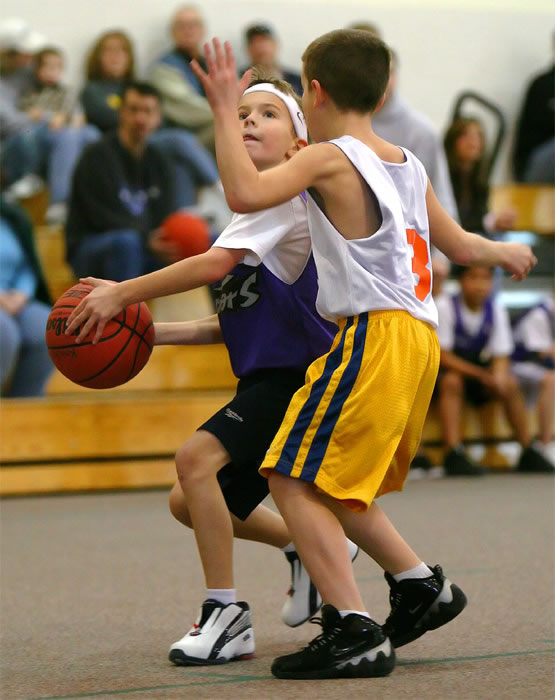
1. Building in 1 line. Alternately in the line, jump in place with a stand with the leg extended forward, squat on the standing leg behind with the hand touching the floor next to it, also on the other leg.
2. In a column, one by one, moving around the hall, make stops on sound signals.
3. The game "Tag" (in pairs, or in groups) performing stops with the arrival. The driver catches up with them and tries to overpower them.
Catching and passing the ball with both hands from the chest while standing still. The main element during catching is the position of the hands, reproducing the shape of the ball. Exercises with passing and catching the ball are performed in the player's stance.
Exercises for learning.
1. In ranks of 4-5 people. In front of each line is a driver. The players take a stand. Hands at face level, brushes reproduce the shape of the ball. The driver alternately puts the ball into the hands of the players, having received the ball, the player lowers his hands to his chest and holds in the position from which the transfer is made.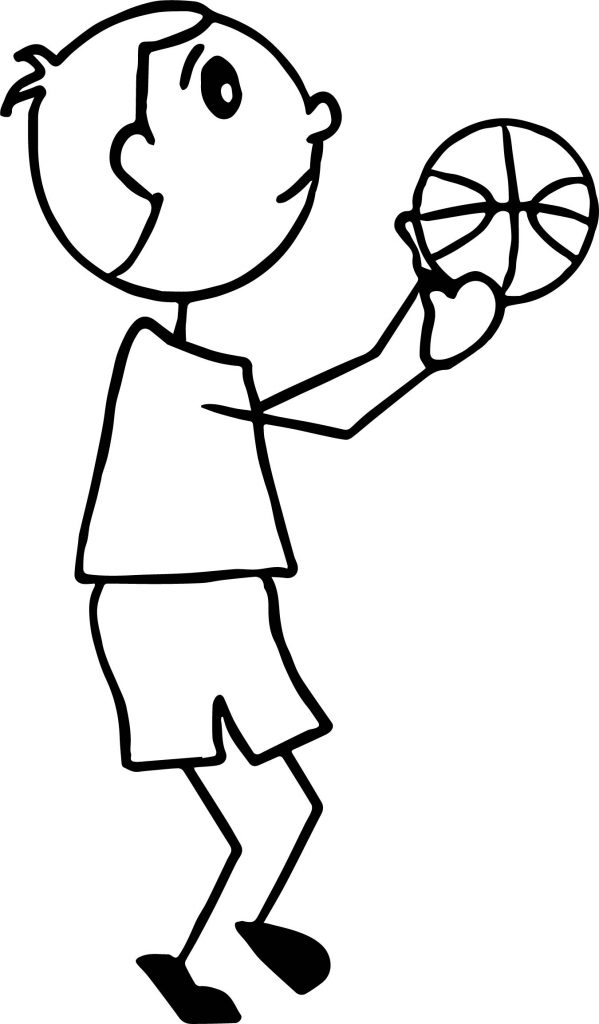
2. Standing in line. The driver alternately throws the ball to the players, doing this from 2-3 m with one hand from below so that the ball flies at face level. The player extends his arms and catches the ball with a step towards.
Dribbling with the right and left hand in a straight line.
The main element is the position of the forearm and elbow of the hand leading the ball, which, as if trying to take a position below the hand, are ahead of the hand. This makes it possible to follow the ball far down and meet it early with a brush, as well as control the ball.
Exercises for learning.
1. Formation in 2 lines. From a stand on strongly bent on strongly bent legs, imitation of dribbling. Start moving down with the elbow and forearm and end with the hand.
The leg is extended forward, the same-named hand performing the lead.
2. Building in a line. Dribbling the ball in place with a change in the height of the ball bounce. The stance is of the same name, the fingers of the hand performing the lead are directed forward.
3. Leading in place with the right and left hand in the right-handed and left-handed stance. During the lessons, I give students various preparatory exercises with the ball, which develop certain motor qualities, such as speed, agility, and also use various outdoor games "Sniper", etc.
Teaching basketball from primary school has a positive result, after all. At this age, a certain base of skills and abilities is laid, and already in the further study of the game, it is easier for students to master tactical and technical elements and techniques.
From my own experience, I can say that by carrying out this form of work, we have achieved good results in regional basketball competitions, where we win prizes.
Theme "Methods of teaching the game of basketball to students of primary and secondary age"
Topic “Methods of teaching games
in basketball students of the younger
and medium ages”
Fulfent:
Physical Culture teacher GOU SOSH 251
Ostapenko Nina Ivanovna
Moscow, 2011
Content:
The value of physical education 3
Basketball as a method of physical education 3
Formation of actions with the ball in school children
when training a game of basketball 4
Features of the training methodology 7
Conditioning Conditions
Rules for schoolchildren 9
Square equipment and inventory for game 11
Annex 1 12 Annex 2 14
Annex 3 16
The value of physical education.
Physical education is one of the necessary conditions for the proper development of children. Introduction to sports from early childhood gives a person physical hardening, brings up dexterity, clarity and speed of reaction, increases activity, develops a sense of friendship. Full-fledged physical development is possible only with the complex use of physical education: natural factors, hygienic measures and physical exercises. A large place in the comprehensive physical development of children is occupied by sports exercises, as well as elements of sports games. Mastering all types of sports exercises is important for versatile physical fitness.
Basketball as a method of physical education.
In the physical education section of the “School Education Program”, children's activities with the ball are included starting from the first grade. They occupy a significant place among other means of physical education and become more complicated from class to class due to the introduction of additional classes, as well as more complex ways of performing.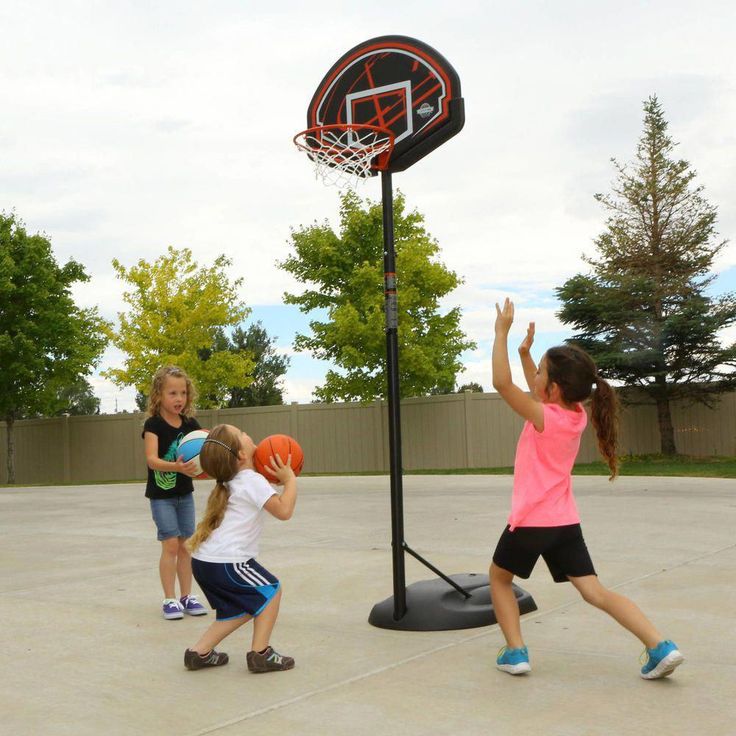 In addition to throwing the ball in different ways with different tasks, throwing at a distance and at a target, the formation of skills for dribbling, hitting the ball, catching, passing, and throwing the ball into the basket is provided.
In addition to throwing the ball in different ways with different tasks, throwing at a distance and at a target, the formation of skills for dribbling, hitting the ball, catching, passing, and throwing the ball into the basket is provided.
Exercises in throwing, rolling balls contribute to the development of the eye, coordination, dexterity, rhythm, coordination of movements. They form the ability to grab, hold, throw an object, teach to calculate the direction of the throw, coordinate the effort with the distance, develop the expressiveness of movement, spatial orientation. In games with the ball, the physical qualities of the student develop: speed, jumping ability, strength. In children of primary school age, the ability for precise movements is still poorly developed, so any actions with the ball have a positive effect on the development of this quality. Exercises and games with the ball, with the appropriate organization of their implementation, have a positive effect on the physical development and performance of the child.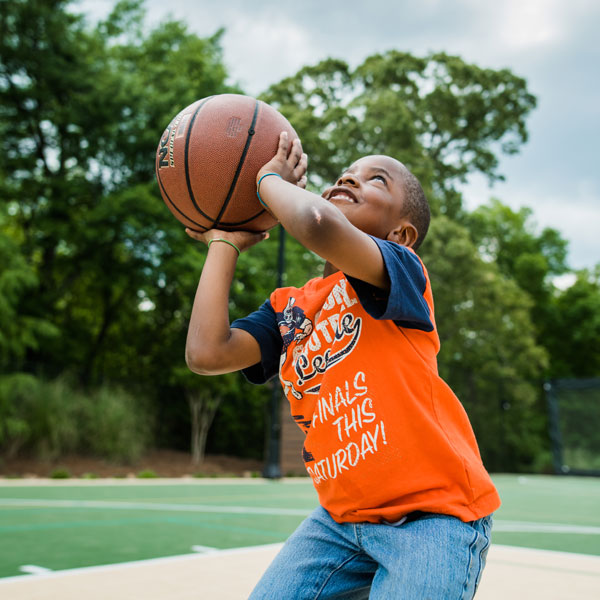 Exercises with balls of various weights and volumes develop not only large muscles, but also small muscles of both hands, increase the mobility of the joints of the fingers and hands. When catching and throwing the ball, the child uses both hands. This contributes to the harmonious development of the central nervous system and the whole organism. When teaching basketball, a wide variety of actions with the ball are used, which provides the necessary physical load on all muscle groups of the child, the muscles that hold the spine are especially important when forming the correct posture.
Exercises with balls of various weights and volumes develop not only large muscles, but also small muscles of both hands, increase the mobility of the joints of the fingers and hands. When catching and throwing the ball, the child uses both hands. This contributes to the harmonious development of the central nervous system and the whole organism. When teaching basketball, a wide variety of actions with the ball are used, which provides the necessary physical load on all muscle groups of the child, the muscles that hold the spine are especially important when forming the correct posture.
In ball games of a collective nature, favorable conditions are created for the upbringing of positive moral and volitional traits of children. Such games teach to overcome selfish urges and bring up endurance. In the game, the child always has the opportunity to test his strength and make sure that his actions are successful. Emotionality, dynamism, a variety of actions and game situations in basketball attract children of all ages to this game.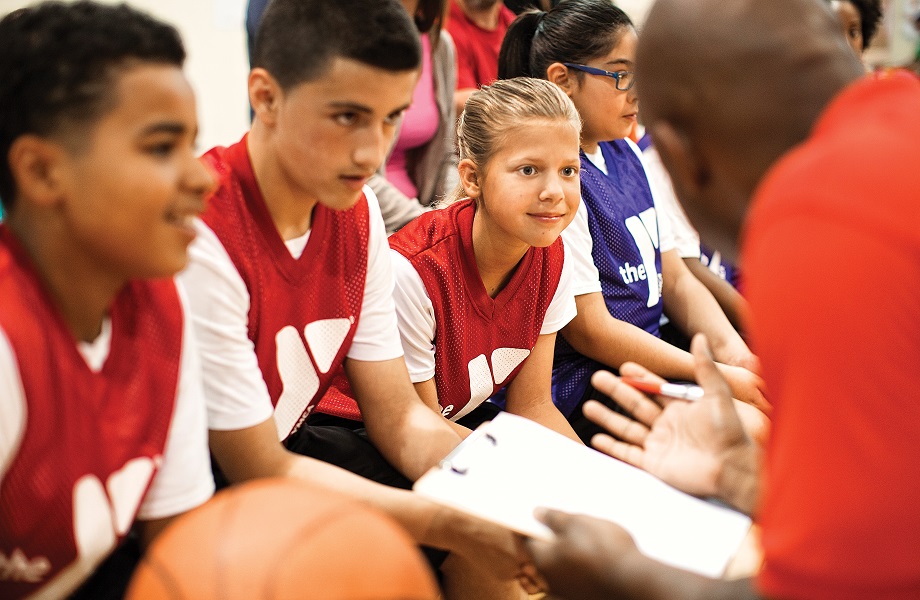
Basketball elementary actions can be widely used in school lessons. At the same time, ball games and special exercises to consolidate ball possession skills can be included in the classes. Teaching children the basic technique of possession of the ball in a game environment should be aimed at achieving the preparedness of children, as well as familiarizing children with basketball in an accessible form. Basketball is a sport game that requires appropriate physical, technical and tactical training of players, which is achieved through special and constant training. The main attention should be directed not to special training, but to the creation of general prerequisites for successful teaching of sports games at school.
Formation of actions with the ball in school-age children when learning to play basketball
Playing with the ball requires a certain amount of mental activity of children: analyzing the situation, making a decision appropriate to the situation, anticipating possible actions of the opponent.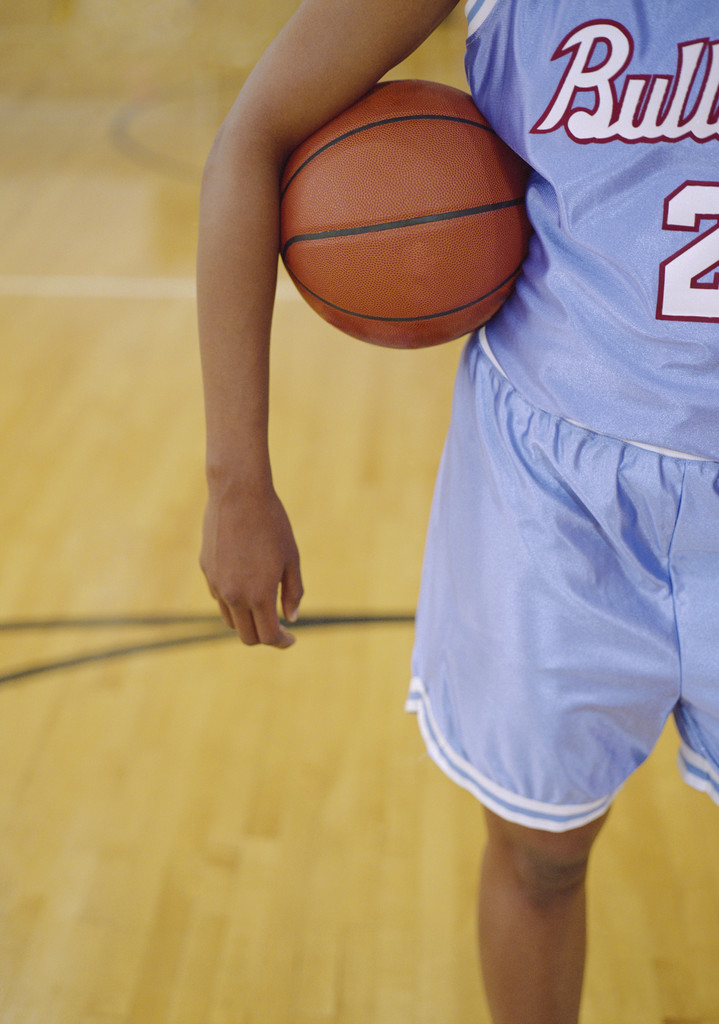 The game of basketball is a team game, the joint actions of the players in it are determined by a single goal. It is complex and emotional, includes fast running, jumping, throwing, carried out in originally conceived combinations, carried out with the opposition of partners in the game. The game of basketball differs from outdoor games in greater certainty. The composition of teams is limited to a set number of participants, and the duration of the game is limited to a certain time. It has established rules that determine the accuracy of motor actions, is carried out with the participation of a judge. Mandatory are: correct marking of the site, appropriate equipment and inventory.
The game of basketball is a team game, the joint actions of the players in it are determined by a single goal. It is complex and emotional, includes fast running, jumping, throwing, carried out in originally conceived combinations, carried out with the opposition of partners in the game. The game of basketball differs from outdoor games in greater certainty. The composition of teams is limited to a set number of participants, and the duration of the game is limited to a certain time. It has established rules that determine the accuracy of motor actions, is carried out with the participation of a judge. Mandatory are: correct marking of the site, appropriate equipment and inventory.
Basketball technique consists of two types of actions. One of them is characterized by movements without the ball and with the ball in hands without passing it to a partner. These include: stance, stops, turns, jumps, false actions. The second type of action is more specific to basketball - catching, passing, dribbling and throwing the ball into the basket.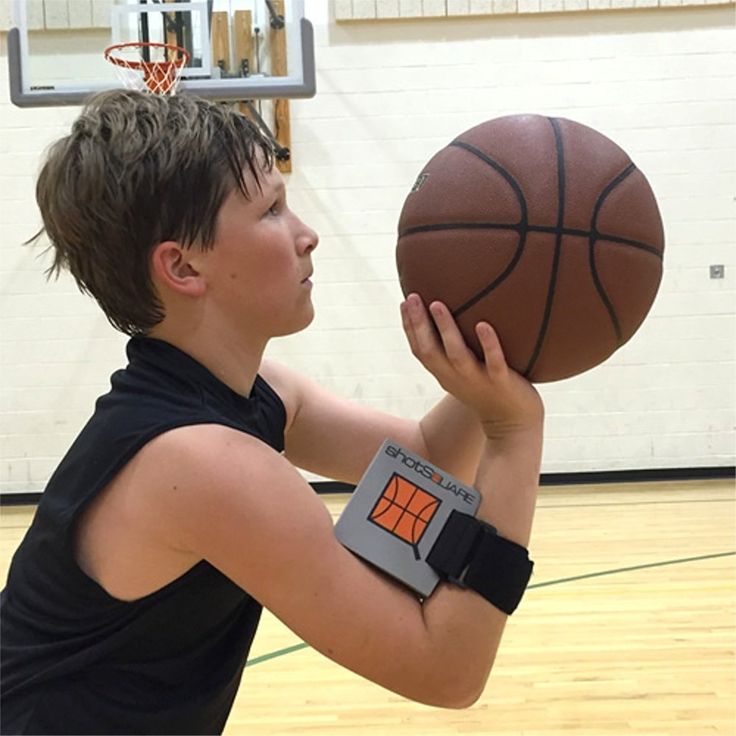
The most important principle of content selection for elementary teaching of basketball techniques for school-age children is the allocation of those actions with and without the ball, which form the basis of the technique of any mobile and sports ball game; available to children in the classroom; give the most effective result in solving game problems. The actions selected for learning should ensure that the effort required for their assimilation corresponds to the level of development of those involved.
To successfully master ball actions, it is necessary to teach children such movement techniques as standing, running, jumping, turning, stopping, as well as ball actions: passing the ball with two hands from the chest and one hand from the shoulder, catching with two hands at chest level , dribbling the ball with the right hand in a straight line with a change in direction, with the opposition of another player, throwing the ball into the basket with two hands from the chest and one hand from the shoulder.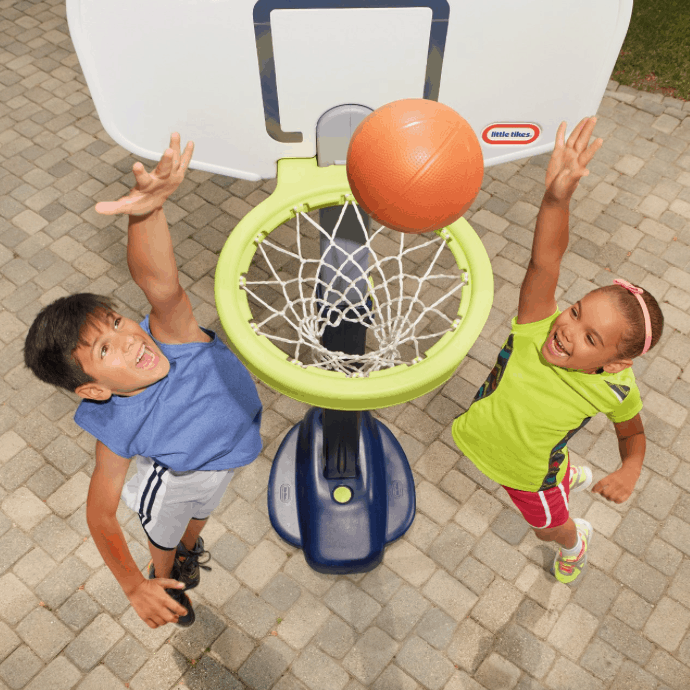
At the beginning, the main task is to develop certain skills to handle the ball, to feel its properties and to make your movements in accordance with them. Therefore, during this period it is advisable to give a lot of different actions, as well as play freely with the ball. Recommended game: "Play, play the ball and don't lose" (see Appendix). It is necessary to ensure that children enjoy playing with the ball, so that after the game they remain satisfied and look forward to the opportunity to play again. Fun, laughter are the constant companions of the child.
Then you should teach the children to hold the ball correctly with both hands at chest level, fingers should be apart, hands should lie behind - gathering, arm muscles are relaxed. It is equally important to teach children to accept, and in the future to maintain a basketball stance, from which you can quickly, conveniently and successfully perform any action with the ball and without the ball.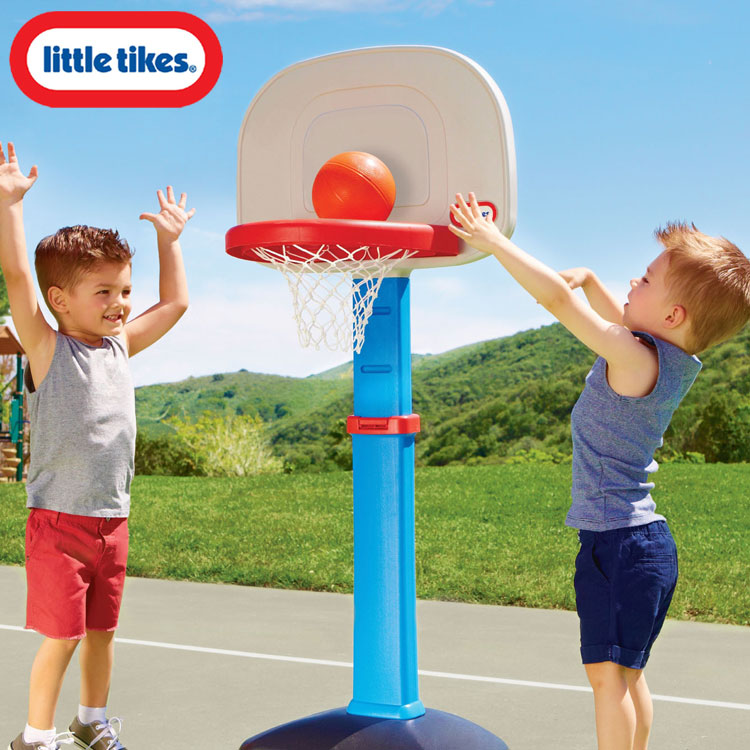 At the same time, the legs are bent at the knees, spaced shoulder-width apart, one of them is set half a step forward. The body is directed forward, its weight is distributed on both legs. The arms are bent at the elbows and are at the level of the body.
At the same time, the legs are bent at the knees, spaced shoulder-width apart, one of them is set half a step forward. The body is directed forward, its weight is distributed on both legs. The arms are bent at the elbows and are at the level of the body.
After children learn how to stand, hold the ball, move around the court, you can teach them to catch the ball with both hands while standing still, and then go out to meet the flying ball, to the sides, back, etc.. The inability of the child to catch the ball often causes offense. He tries to press the ball to his chest, and when he does not have time to do this, the ball flies right in the face. A flying ball must be met with hands as soon as possible. By the way, with fingers wide apart, they form, as it were, half of the ball in which the ball should fit. You need to keep track of the flight of the ball. As soon as the ball touches the fingertips, it is necessary to grab it and pull it up with a shock-absorbing movement.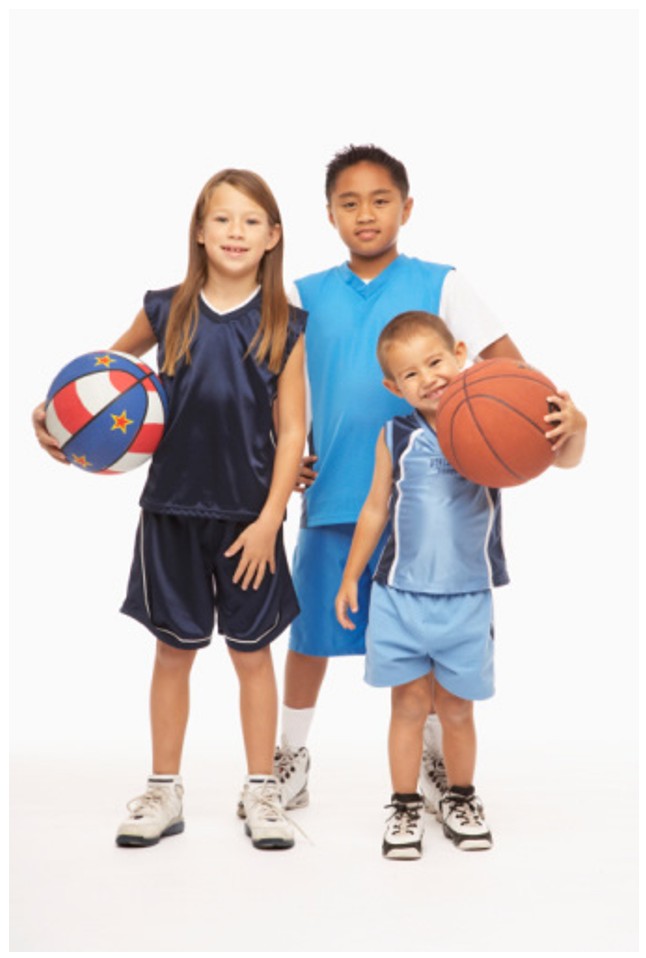
The performance of catching the ball, as well as other elements of basketball in different conditions, in combination with other actions, contributes to the improvement of the studied action, the ability to further apply it independently in game situations.
At the same time, in catching the ball, it is necessary to teach children to pass the ball with both hands from the chest from a place, and then in motion. Children should be taught to pass the ball from the correct stance, holding it with their hands at chest level. They should describe a small arc with the ball down, then on the chest, and extending their arms forward, send the ball away from themselves, with an active movement of the hand, at the same time I extend my arms. In the process of learning to pass the ball, it is necessary to remind children that the elbows should be lowered along the body, that one should try to throw at the level of the partner’s chest and the ball should be accompanied by eyes and hands.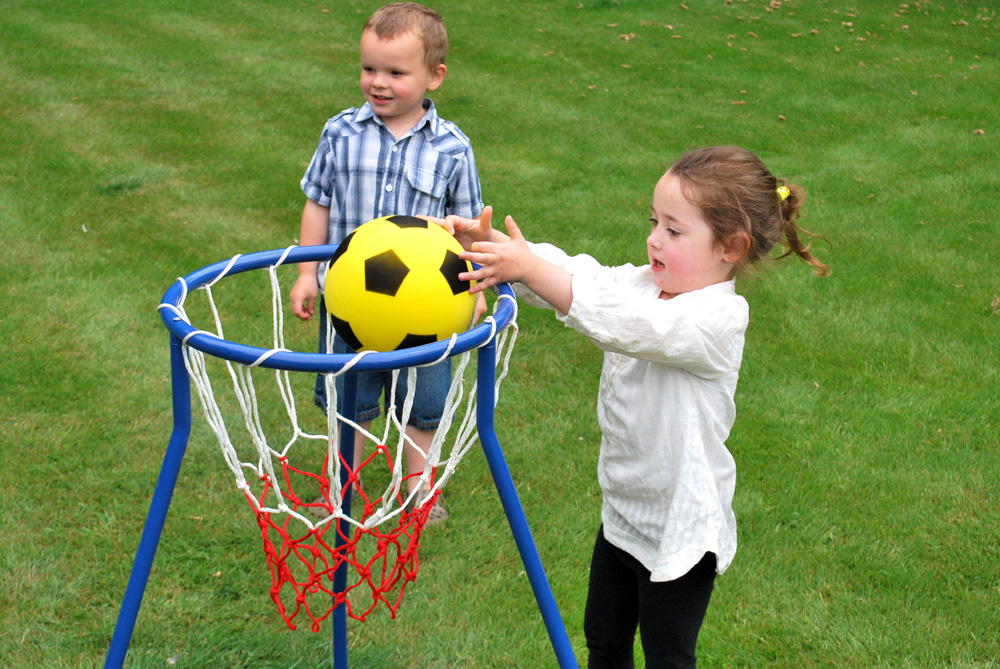
One of the most important things to do with the ball is to dribble it. It allows the player to move around the court while holding the ball. When dribbling the ball, children learn to move around the court on slightly bent legs, tilting the body slightly forward. The pushes of the ball are performed somewhat to the side of the player, evenly, in coordination with the movement of the child. Many children try to dribble the ball straight ahead, hit the ball from above, which prevents progress, do not know how to combine the rhythm of the movement of the hand with the rhythm of the footwork, control the ball and therefore often lose it. As a result of systematic training in dribbling, children develop the ability to successfully control the ball even without visual control, moving with a side step, changing the pace of running, the height of the ball bounce and the direction of movement. The most favorable rhythm of dribbling for children of school age is one in which the child has one ball hit on the court for two steps of the child.
Passing the ball and throwing it into the basket are similar movements in their structure. Children should be taught to throw the ball into the basket from a place or fix a stop after catching and dribbling the ball. Throwing the ball into the basket from the chest from a place follows from the same starting position as in the method of passing the ball. Holding the ball at chest level, the child player must describe a small arc down and towards himself and, straightening his arms up, direct the ball to the target while extending his legs. The hands and fingers open, performing a guiding push. From the very beginning of training, it is necessary to pay attention to the fact that children throw the ball while standing in the correct stance, aim, follow the ball with their eyes, and do not take their elbows to the side.
Features of teaching methods.
When learning to catch, pass, dribble and throw the ball, approach exercises play an important role. They have significant similarities with the main action being studied, but are simpler and easier for children. Lead-up exercises allow you to highlight the main link of the studied movement, which facilitates the development of a motor action.
They have significant similarities with the main action being studied, but are simpler and easier for children. Lead-up exercises allow you to highlight the main link of the studied movement, which facilitates the development of a motor action.
At the initial stage of the formation of ball possession skills, the child's attention should be directed to the quality of the movement, and not to achieve a certain result with the help of this movement. If the children have not yet fully mastered the new movement, the skill has not yet been formed, then the competition for speed, the execution of the movement, contributes to their incorrect consolidation. But this does not mean that at the initial stage of the formation of the action with the ball, the main method of training should be only an exercise. A wide application of the game method is possible from the very beginning. Using games and play exercises, which can account for 60-70%, we will satisfy the desire of children to play.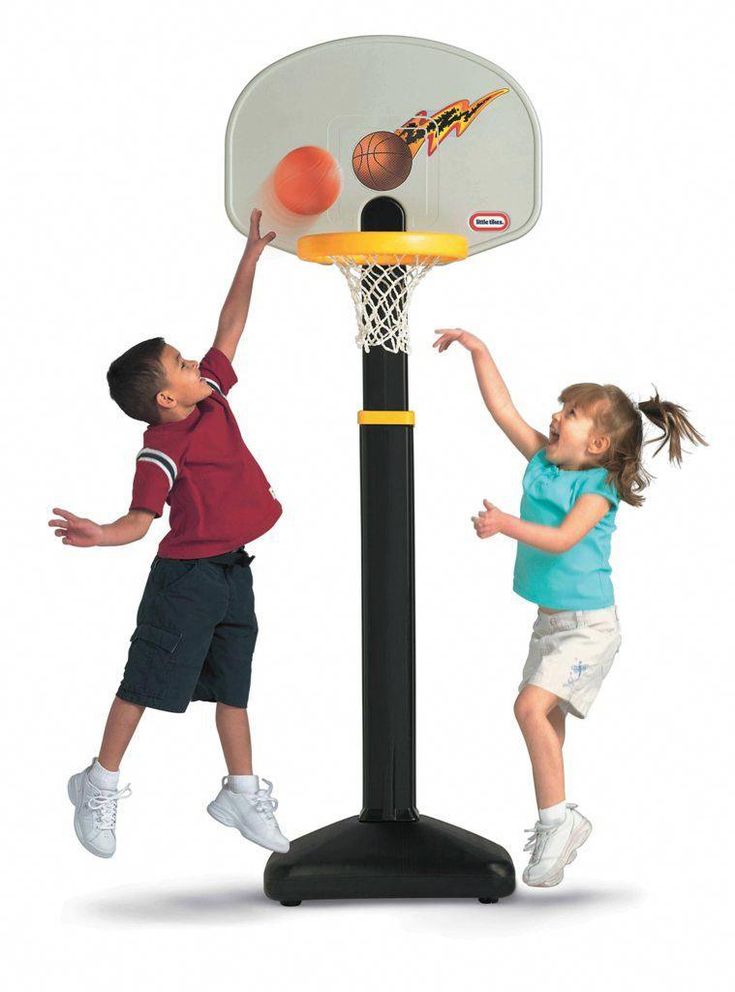 Effective use of outdoor games, where each player acts for himself, in combination with training.
Effective use of outdoor games, where each player acts for himself, in combination with training.
In the future, it is advisable to use outdoor games in which the result of the team depends on the participation of each child acting independently of their partners. Such games increase the responsibility of the child to the team and encourage him to act in the most effective way, mobilizing maximum efforts to achieve the best result.
After children learn how to catch, pass, dribble and throw the ball correctly, at a fast pace, without much effort, it becomes possible to play more complex, closer to basketball, as well as basketball according to simplified rules. In such games, children must interact with the ball, which increases the opportunity and creates conditions for the fastest and most meaningful formation of ball skills.
When teaching the elements of basketball, it is especially important to ensure their conscious assimilation. Children's understanding of the meaning of movements accelerates the process of motor skills formation, and what is especially important, it contributes to the ability to independently select effective actions in subsequent games and apply them appropriately. A conscious attitude to actions with the ball arises in children only if the teacher explains their meaning in various situations of application, explains why they should be performed in this way. The child must know why in a given game environment it is more expedient to apply certain actions, to perform them in a certain way, at a certain speed and in a certain direction. For example, children need to be taught that they should only dribble in a game if they cannot pass it to their partner. When a defender approaches, it is safer to dribble with the farthest hand and low bounce. There is no need to rush, it is better to dribble the ball closer to the goal or to a more free place for a partner to pass.
Children's understanding of the meaning of movements accelerates the process of motor skills formation, and what is especially important, it contributes to the ability to independently select effective actions in subsequent games and apply them appropriately. A conscious attitude to actions with the ball arises in children only if the teacher explains their meaning in various situations of application, explains why they should be performed in this way. The child must know why in a given game environment it is more expedient to apply certain actions, to perform them in a certain way, at a certain speed and in a certain direction. For example, children need to be taught that they should only dribble in a game if they cannot pass it to their partner. When a defender approaches, it is safer to dribble with the farthest hand and low bounce. There is no need to rush, it is better to dribble the ball closer to the goal or to a more free place for a partner to pass.
For a child's conscious attitude to actions with the ball, explanations and demonstrations are not enough: it is necessary to give the child the opportunity to exercise, act, actively apply the acquired skills in play activities.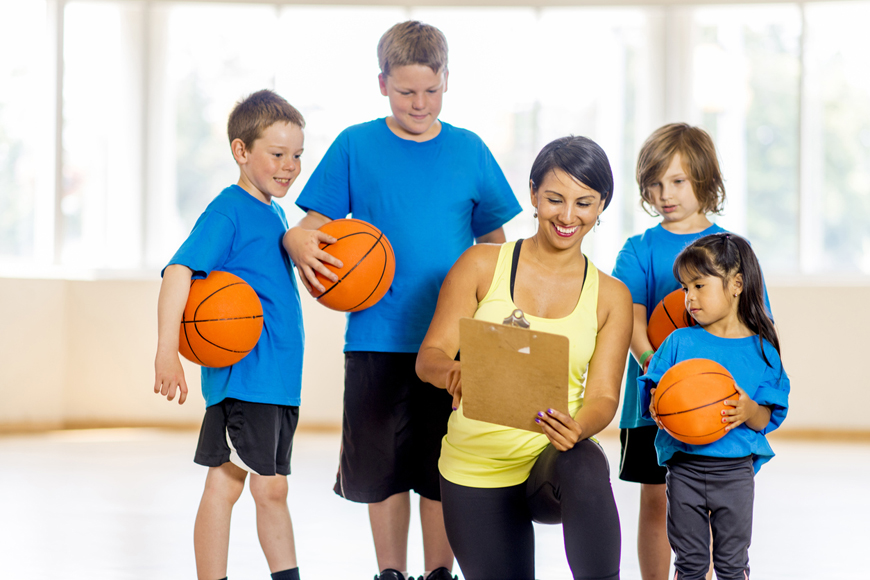 Only when the explanation of the technique of actions is combined with the demonstration and the exercises of the children themselves, the child develops a conscious attitude to actions with the ball, the ability to use them expediently in play activities.
Only when the explanation of the technique of actions is combined with the demonstration and the exercises of the children themselves, the child develops a conscious attitude to actions with the ball, the ability to use them expediently in play activities.
In ball games, it is necessary to teach children to coordinate their actions with the actions of their comrades on the basis of friendly relations and solidarity. To do this, you can create permanent teams in the classroom, encourage loyalty to teammates, warning children from going over to the side of the enemy.
In ball games, children should develop the habit of sacrificing personal interests in order to achieve a common goal. To do this, you can use the restriction of actions with the ball to introduce additional requirements. For example: limiting the distance of the ball, including the task of throwing the ball to the catcher after the ball has gone around all the players on the team.
Often in ball games there is a need to help a player who is in a difficult situation, and sometimes you have to risk your favorite role in the game. Children should be taught to do this.
As a tactical element, many ball games allow and encourage players to use distractions. They are aimed at diverting the attention of the enemy through false actions that precede the main ones, in order to beat him. Middle school children learn such actions with and without the ball. For distracting actions, the guys were encouraged when it helped to free themselves from the guardianship of a friend, go to an empty place to receive the ball or take a comfortable position to ensure that cheating, which is a direct violation of the rules of the game, was not allowed.
Conditions for the educational process.
Ball games are held in almost all physical education classes. Their duration is 15-20 minutes.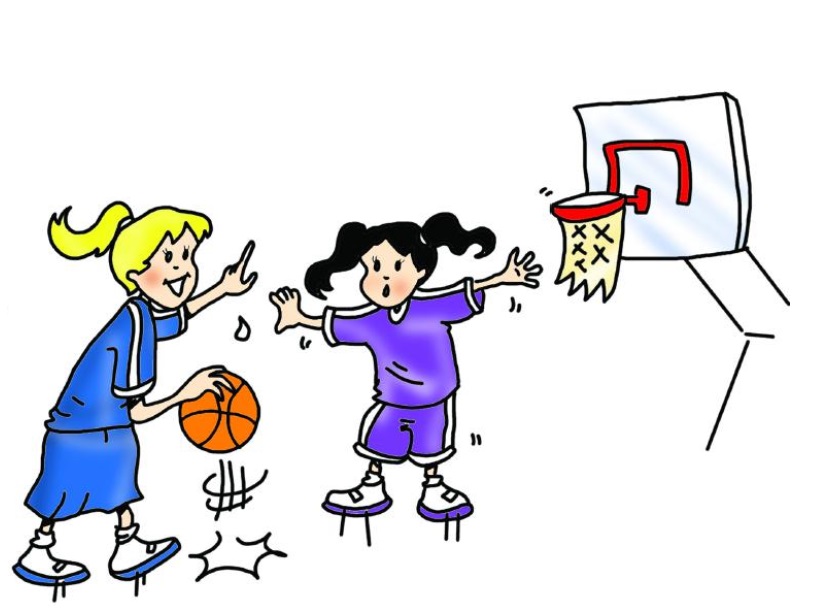
It is advisable to play some games leading to basketball with children, combining them with other sports exercises, or with other activities that do not require constant teacher supervision. After mastering certain actions with the ball and the structure of the game, children should be led to independent ball games without the direct guidance of the teacher.
Game rules for schoolchildren.
The goal of the game.
The game is played between teams of five players each. The goal of each team in the game is to score as many balls as possible in the opponent's basket while respecting the rules of the game.
Participants of the game.
Each team consists of 5 players on the court and several substitutes. One of the players is the team captain. Players on one team must wear distinctive badges from the other team.
Judging.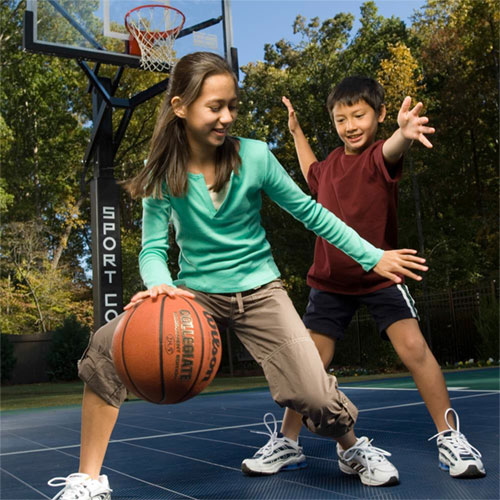
The teacher monitors the implementation of the rules of the game by the players, makes comments and gives signals in case of violation of the rules, counts the ball hitting the basket, resolves disputes.
Game time.
The game consists of four halves. Each half lasts 10 minutes. There is a break in between. The teacher controls the time of the game. During the break, throws are carried out on the ring.
Game score.
When the ball hits the basket, the team is awarded 1, 2 or 3 points. The game can end with the victory of one team or a draw.
Game rules.
The teacher can change players during the game. The ball can be passed, thrown or dribbled in different directions. Kicking the ball is prohibited. Accidentally touching the ball to the foot is not a violation. The ball is considered out of play if it touches the floor of a player or an object outside the court.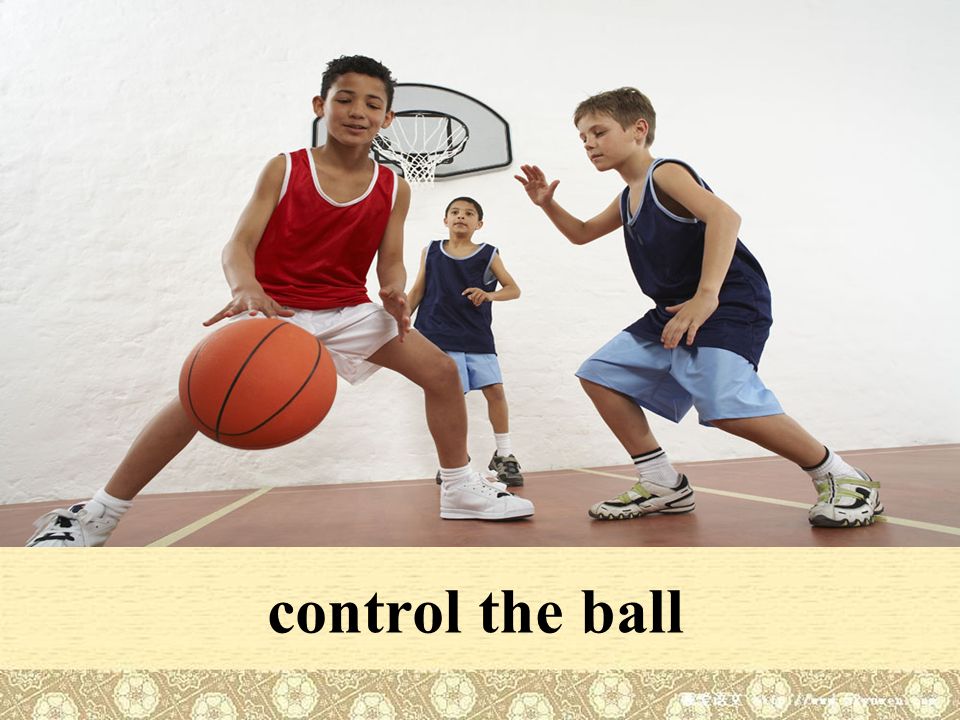 The ball is considered out of play by the player who last touched it. A player who receives the ball in motion may take no more than two steps with it, after which he must pass, throw or dribble. A player is not allowed to dribble with both hands at the same time.
The ball is considered out of play by the player who last touched it. A player who receives the ball in motion may take no more than two steps with it, after which he must pass, throw or dribble. A player is not allowed to dribble with both hands at the same time.
Violations.
Failure to comply with the rules of the game listed above is considered a violation. Usually, after a violation, the ball is thrown into play by a player of the opposing team. Throwing the ball into play is always made from behind the touchline, against the place on the court where the violation was committed.
Rules of conduct.
Children must always be correct when playing. Players who behave in an undisciplined or rude manner must be temporarily removed from the court. It is forbidden to: pull clothes, hands, push, put your foot in, etc.
Playground equipment and inventory.
Baskets to be used with a backboard, length 120 cm, height 90 cm, inner diameter of the baskets 45 cm.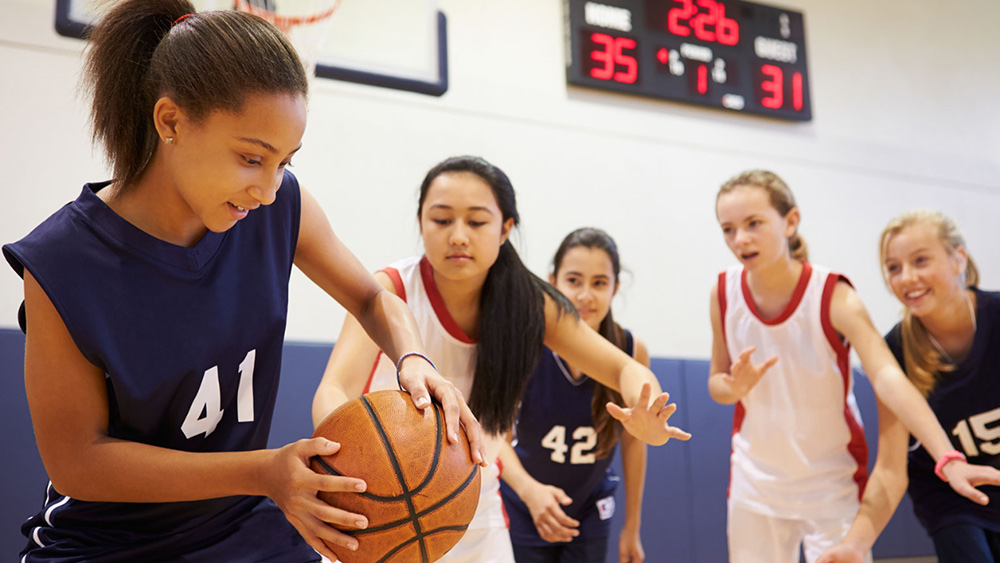 Baskets are hung at a height of 305 cm. When learning to dribble, it is better to use inflatable balls. Children's rubber balls do not bounce off the floor well and leading them, the children make an effort, which leads to the adoption of an incorrect stance.
Baskets are hung at a height of 305 cm. When learning to dribble, it is better to use inflatable balls. Children's rubber balls do not bounce off the floor well and leading them, the children make an effort, which leads to the adoption of an incorrect stance.
The most comfortable area for ball games is 13 meters long and 7 meters wide. On the site, the side and front lines, as well as a circle in the center of the site with a diameter of 1.8 meters, should be noted. The platforms can be of different coverage, but wooden ones are better.
The game can also be played in the sports hall of a children's school. Equipment and inventory according to the site.
Appendix 1
Methods of teaching children.
Sample exercises to prepare for learning passing techniques - catching the ball.
-
Throwing the ball up and catching it with one or both hands.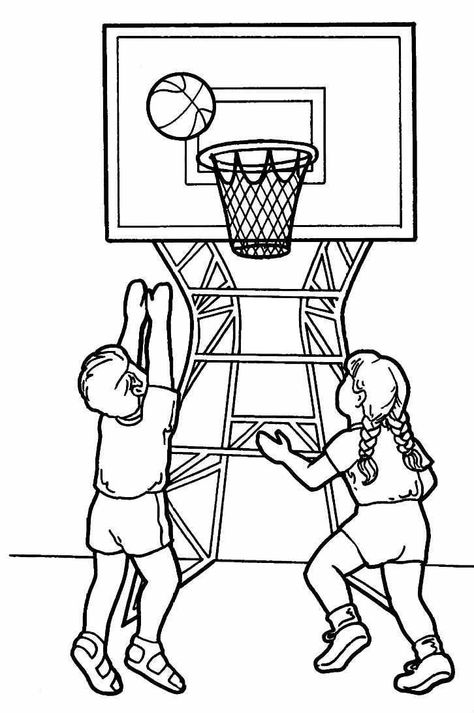
-
Throwing the ball down in front of you and catching it with one or both hands.
-
Throwing the ball to a partner in a child-friendly way, with one or two hands.
-
Throwing the ball up in front of you with a clap and catching it.
-
Throwing the ball up and down on the floor and catching it with both hands.
-
Hitting the ball on the floor with a clap, turning around and catching it.
-
Walking with ball tossing and catching with both hands.
-
Passing the ball with two hands from the chest, one hand from the shoulder into the wall and catching it.
-
Passing the ball in a line and in a circle.
-
Passing the ball with one and two hands to each other in pairs.
Exercises to prepare for dribbling.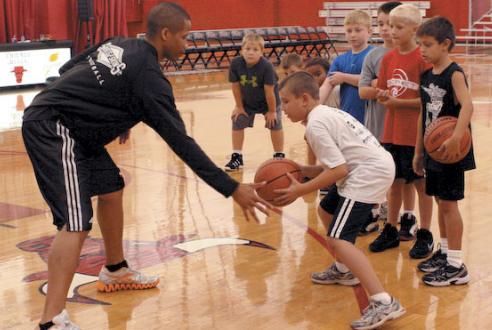
-
Hitting the ball on the floor with one hand and catching it with both hands while standing and walking.
-
Hitting the ball on the floor with the right hand and catching with the left hand, and vice versa.
-
Dribbling in place with the right and left hand.
-
Hitting the ball in place with the right and left hand.
-
Dribbling the ball in place with the right and left hands, followed by passing the ball with both hands in an arbitrary way.
-
Alternate tossing the ball with hitting the floor.
-
Dribbling the ball by hitting it with the palm of the hand (freehand).
-
Dribbling, walking stop and passing the ball.
-
Dribbling around you.
-
Dribbling with changes in speed and direction.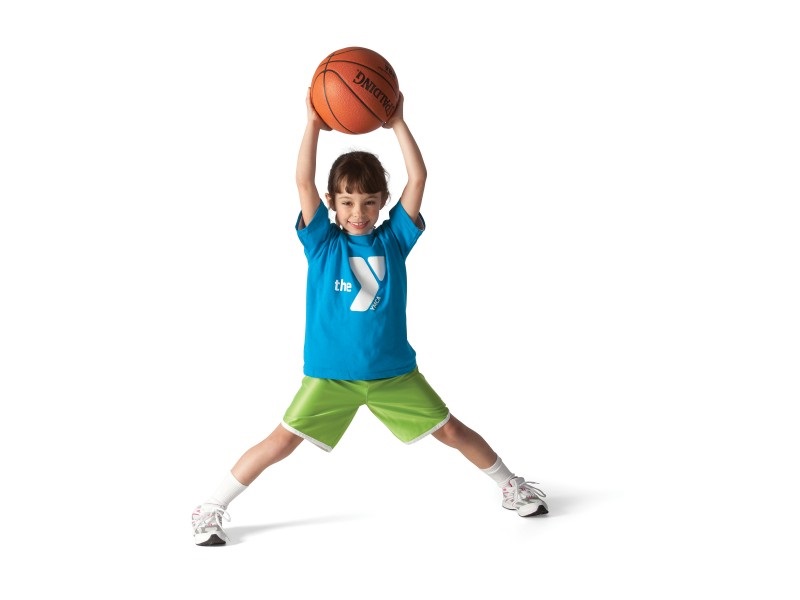
Exercises to prepare for throwing the ball into the basket.
-
Throwing the ball over the net stretched above the child's head (in any way).
-
Throwing the ball into a hoop located on the floor from a distance of 2-2.5 meters, from below, above and behind the head.
-
Hitting the ball on the floor and throwing it at the backboard.
-
Throw the ball into the basket, throw the ball into the basket on the floor in a child-friendly way.
-
Throwing the ball into the basket after a dribble with fixation of a stop.
Appendix 2
Sample lesson plans.
Lesson #1
Tasks. To form the desire to act with the ball, to teach how to quickly respond to a signal, to cultivate endurance and attention.
Benefits: white balls according to the number of children, whistle.
Content and methodology.
The first part.
-
Walking one after another with a ball in hand. Throw the ball up and catch it 5-6 times in a row.
-
Throwing the ball up and catching it after bouncing off the floor. Learn to follow the ball when throwing, catch it with your palms. Repeat 8-10 times.
-
Rolling the ball with both hands. The exercise is performed by all children at the same time 4-6 times. Remind that when rolling the ball, you should look ahead, catching up with the ball and not interfere with your friend.
Second part. Mobile game "Play, play the ball do not lose."
Remind the children what moves to make with the ball. Explain that after the signal, it is necessary to catch the ball as quickly as possible and hold it freely, with both hands at chest level, fingers wide apart.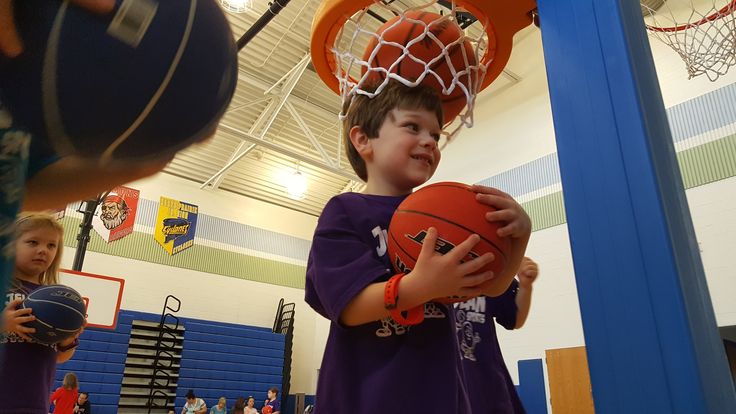 Repeat 5-6 times.
Repeat 5-6 times.
Third part. Sedentary game "Be careful" (3-4 minutes). Children become in a circle, in the middle of its leader is a teacher. He throws the ball to someone from the circle, using deceptive actions, and he must catch the ball. The one who does not catch the ball receives a penalty point. Remind the children to take the ball.
Lesson #2
Tasks. To teach catching the ball, to form the skills of throwing the ball, to promote the development of the eye, coordination of movement and dexterity, to learn to play together.
Benefits: White balls according to the number of children, whistle.
Content and methodology.
The first part.
-
Throwing the ball up and catching it after the bounce. Repeat 6-8 times. Before each throw, the teacher checks whether the children took the ball correctly and reminds them that the ball must be caught with a shock-absorbing movement.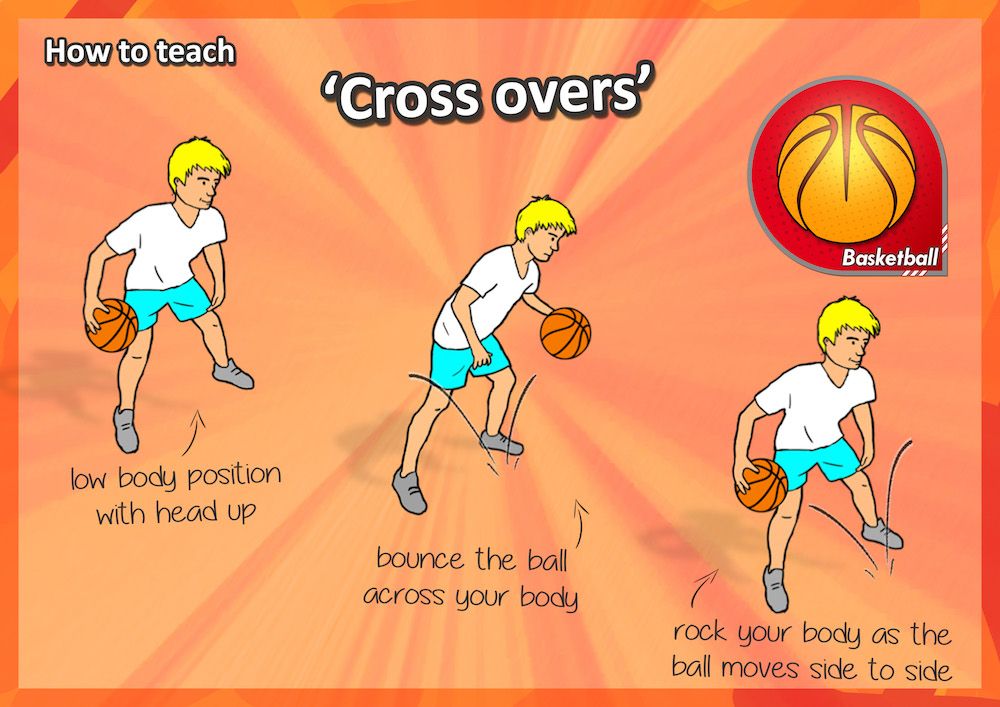
-
10 passes game. Repeat 2-3 times. Pay attention to the technique of catching the ball.
Second part.
Outdoor game “Overtake the ball” (6-8 minutes). Is it advisable to organize the game at a slow pace for the first time? So that everyone understands it correctly, and then hold competitions.
Third part.
Free game of children with a ball on the playground. Each child has a ball. The teacher makes sure that the children do not push, play together, encourage and prompt. Helps some children individually.
Lesson #3
Tasks. To teach children to dribble on the spot, to exercise in passing and catching the ball, to promote the development of coordination of movements, orientation in space, to teach the transfer of the ball.
Handbook. W/B balls according to the number of children, whistle.
Content and methodology.
The first part.
-
Dribbling in place with the right and left hand in place for 2 minutes. Explain to the children that they should not push the hand down, and not hit it, including the work of the hand and forearm. Spread your fingers wide, dribble the ball forward and to the side.
-
Dribbling with the right and left hand around you for 2 minutes.
-
Dribbling the ball in place with the right and left hand, changing the height of the ball bounce, direction and speed of the ball.
Second part.
-
Children in pairs pass the ball with one hand from the shoulder at a distance of 2.5-3.0 meters. Learn to accompany the ball with either the right or the left hand (2 minutes).
-
Outdoor game "For the ball". Make sure that the children correctly pass the ball, strive to accurately throw it to their partner in the game (8 minutes).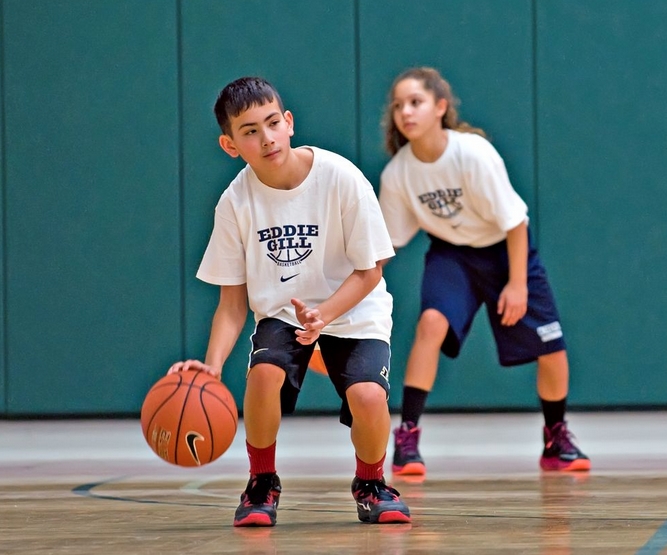
Third part.
Children stand behind the line in five columns, two to three meters from which there are 5 hoops. They alternately throw the balls into the hoops, trying to hit them, in any way.
Application 3
-
Outdoor ball games.
"Play, play, don't lose the ball."
Tasks. To teach children to listen to the signal, to let them feel the physical qualities of the ball, to form the ability to control the ball and play with it without interfering with a friend, to find a free place on the court.
Description of the game. All children are located on the playground and everyone plays with the ball at their own discretion. After the teacher's signal, everyone should raise the ball up as quickly as possible. Latecomers receive a penalty point. The game is repeated.
Options. After the teacher's signal, all players must properly hold the ball or take a basketball stance.
After the teacher's signal, all players must properly hold the ball or take a basketball stance.
Guidelines. Before the game, the teacher names the movement with the ball that the children can perform.
-
Games with passing, catching the ball.
"10 gears"
Tasks. To teach children to pass - to catch the ball, to develop the ability to coordinate actions with comrades, to cultivate the desire to help a friend perform movements correctly.
Description of the game. Children become pairs at a distance of 1.5-2.0 meters from each other. Each pair has a ball. On a signal, the children begin to pass the ball to each other in a given way, trying not to drop it on the ground. The winner is the pair that makes 10 passes faster without the ball falling.
Guidelines. Draw the children's attention to the fact that the ball must be caught without touching the chest, but thrown to the partner at chest level.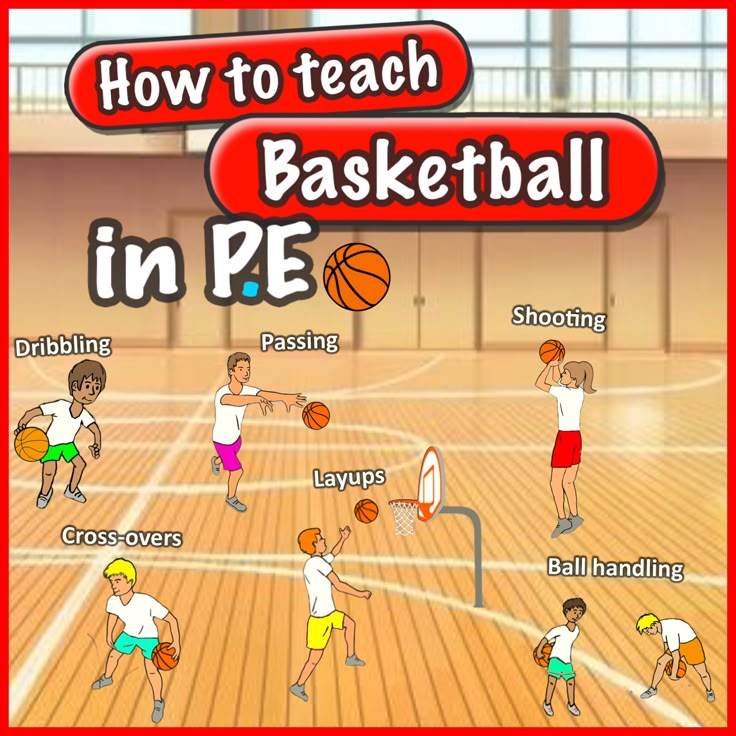
"Overtake the ball"
Tasks. Learn to pass, catch the ball, bring up responsibility to the team.
Description of the game. Teams 2 and 4 play. The players of each team stand in a circle and choose the incoming ones who have the ball. After the teacher’s signal, the drivers give the ball to the player standing to their right, and they themselves run to the left, run around the circle and take their place. Those who received the ball pass to the next on the right, etc. When the first player returns to his place, the next player runs. The game continues until everyone runs around the circle, and the ball returns to the driver. The team that finishes the game the fastest wins.
"For the ball"
Tasks. To teach to pass, to catch the ball with both hands from the chest, to develop the ability to navigate the court, to bring up responsibility to the team.
Description of the game. Children are divided into several teams. Each team is divided into two columns, which stand one opposite the other at a distance of 2-3 meters. At the driver of the ball. After the signal, the driver passes the ball against the player standing in the column on command, and he runs to the end of the opposite column, i.e. behind the ball. The catcher also passes the ball against the standing one and goes after the ball. The game continues until all players return to their places, and the balls are at the drivers.
Children are divided into several teams. Each team is divided into two columns, which stand one opposite the other at a distance of 2-3 meters. At the driver of the ball. After the signal, the driver passes the ball against the player standing in the column on command, and he runs to the end of the opposite column, i.e. behind the ball. The catcher also passes the ball against the standing one and goes after the ball. The game continues until all players return to their places, and the balls are at the drivers.
Guidelines. Children will quickly understand. Where to run after passing the ball, if they are explained that they must move after the ball, in the direction in which they threw the ball.
-
Games for teaching ball dribbling.
"CATCHER WITH BALL"
Tasks. To teach children to dribble in the correct stance with their right and left hands while running, changing the direction and speed of movement, to cultivate clarity and fairness.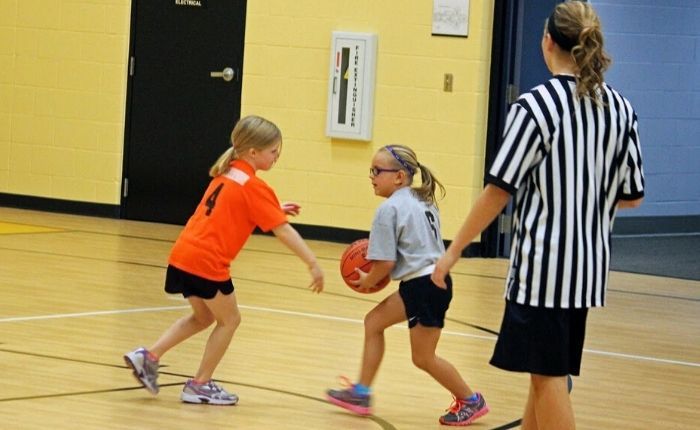
Description of the game. Children with the ball move freely around the site, one of them is the driver. His goal, while driving the ball, is to hit someone with his hand. If he succeeds, then the one whom he touched becomes the driver.
Guidelines. At the beginning of training, the role of the driver is played by the teacher, and later by the student, who freely controls the ball.
-
Games with throwing the ball into the basket.
Five Throws.
Tasks. To teach children to throw the ball into the basket, to develop accuracy, accuracy of movements, to cultivate honesty and justice.
Description of the game. Children are located at a distance of 1.5-2.0 meters from the basket. At the signal of the teacher, all the children throw the balls into the basket. The winner is the one who gets 5 balls into the basket faster. In the specified way.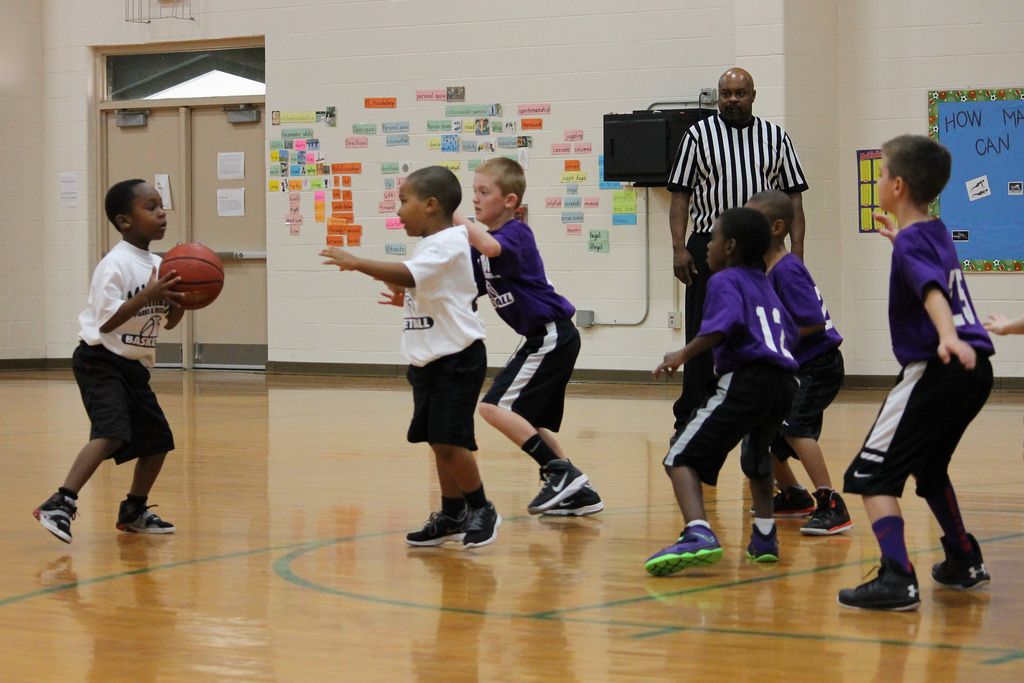
-
Game of catching, passing and dribbling.
"BALL TO THE CAPTAIN"
Tasks. To learn to apply various movements with the ball in the game, to coordinate their actions with the actions of a partner.
Description of the game. Children are divided into two teams. In each team, a captain is selected, who stands in a circle drawn at the end of someone else's site. Children throw the ball to their captain, and the opponents try to intercept the ball and pass it to their captain.
Guidelines. The ball can be dribbled, passed to a teammate, you can not run with the ball in your hands.
Literature.
-
Adashkyavichene E. I. “Basketball for schoolchildren”, Moscow: Education 1983. T. A., Keraminas S. A. "Training of young basketball players", M .: Fizkultura i sport 1964
-
Keneman A.